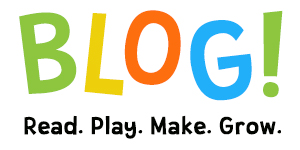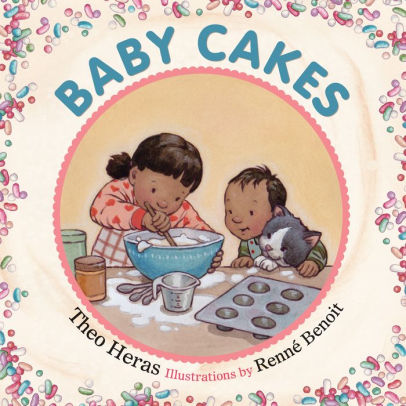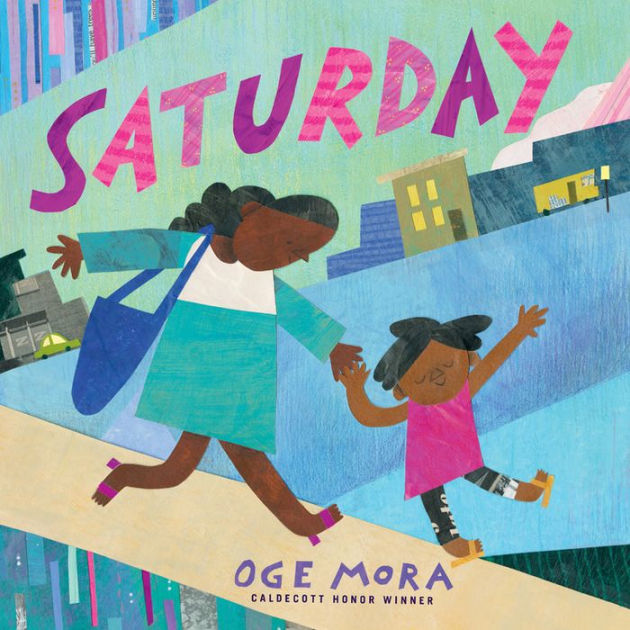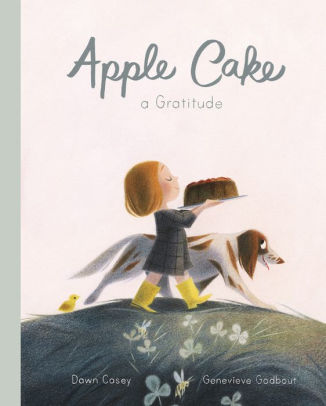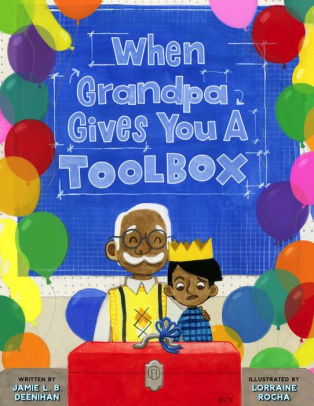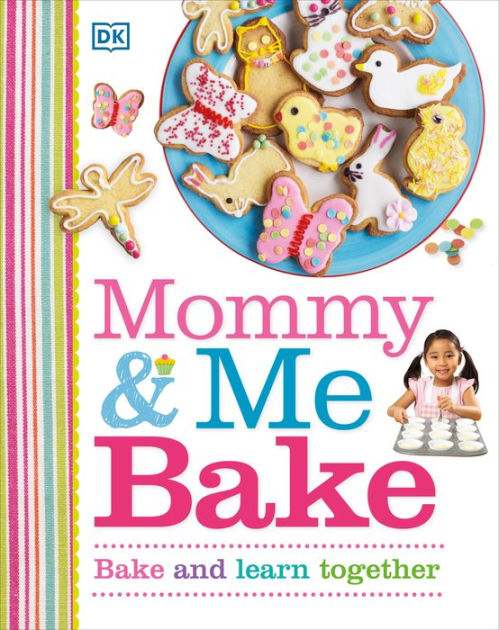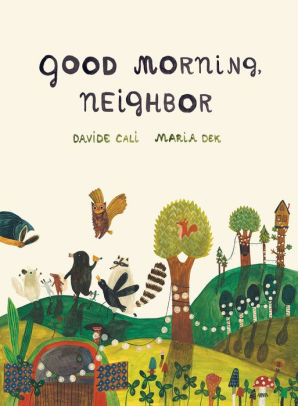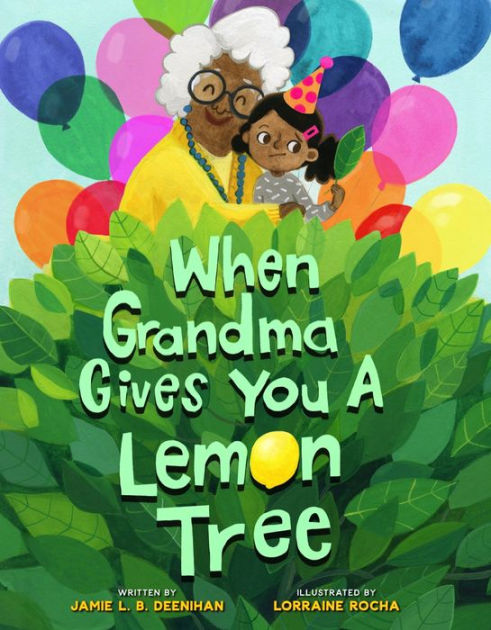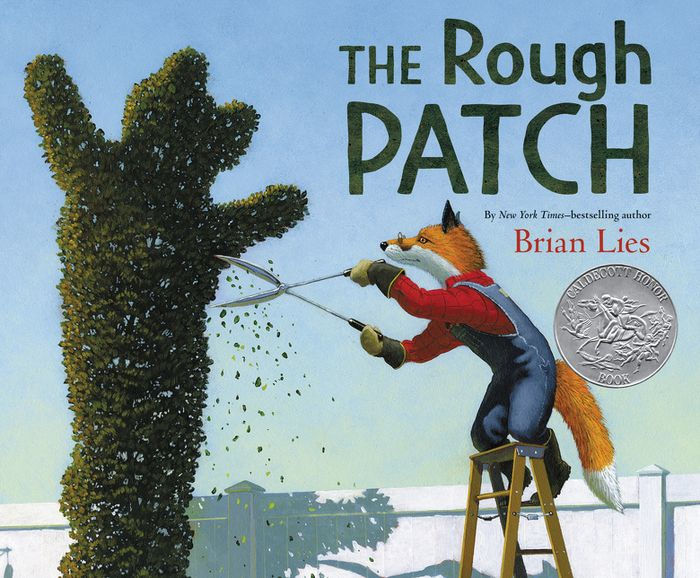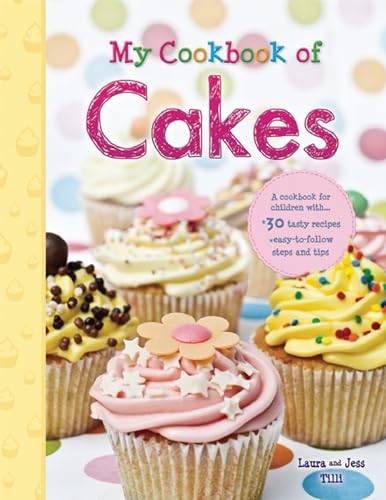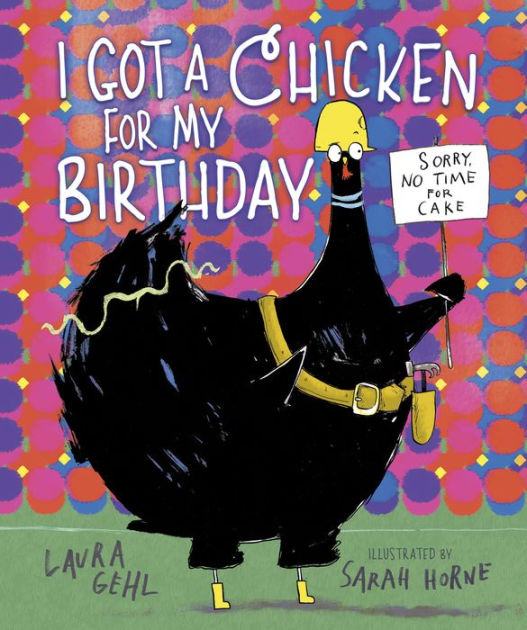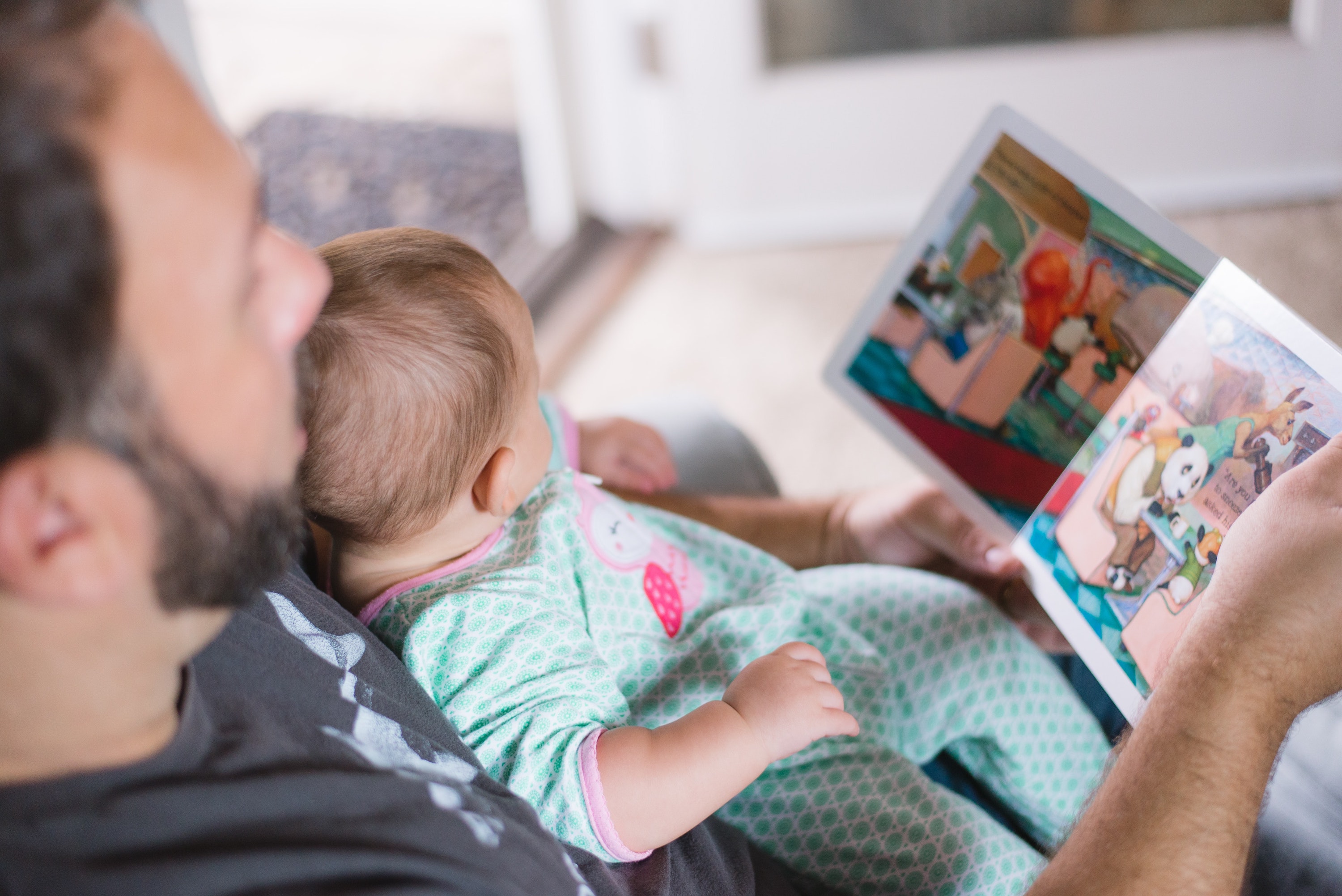-
Beginning Reader Kits
We have a new line of Backpacks in the Youth Department! These are the Beginning Reader Kits - a set of nine backpacks designed for pre-readers and beginning readers. There are games, BOB Book sets, and other activities to do that will introduce and build reading concepts. The kits are: CVC Words, Letter Recognition, Word Recognition, Sight Words 1 + 2, Rhyming, Word Families, Word Building, and Storytelling. Find all nine kits in our catalog to see the contents of each kit and to place any of them on hold. If you check any out, be sure to let us know what you think by filling out the provided comment card!

Be sure to check out our other kits as well! STEM Kits, Early Learning Kits, and Board Games are all available in the Youth Department!
 Youth Services Assistant Librarian Claire
Youth Services Assistant Librarian Claire -
October Baby Time Rhymes!
If you can't make it to Baby Time this month, or if you just can't get enough and want to recreate it at home-we've got you covered! Here are all of the wonderful rhymes we'll be sharing in our October sessions.
All the Little Babies
All the little babies go bouncin’, bouncin’
All the little babies go bouncin’ now.
All the little babies go bouncin’, bouncin’
All the little babies go bouncin’ now.
All the little babies go swayin’, swayin’
All the little babies go swayin’ now.
All the little babies go swayin’, swayin’
All the little babies go swayin’ now.
All the little babies say hello, hello
All the little babies say hello now.
All the little babies say hello, hello
All the little babies say hello now.
Humpty Dumpty
Humpty Dumpty sat on the wall,
Humpty Dumpty had a great fall,
all the king's horses and all the king's men
couldn't put Humpty together again.
Diddle Diddle Dumpling
Diddle, diddle, dumpling, my son John
Went to bed with his trousers on.
One shoe off, and the other shoe on.
Diddle, diddle, dumpling, my son John.
Pizza, Pickle, Pumpernickel
Pizza, pickle, pumpernickel,
My little one shall have a tickle!
One for your nose,
And one for your toes,
And one for your tummy, where all the food goes!
Baby Goes Bumpy Boo
Baby goes bumpy boo.
Baby goes bumpy bye.
Baby goes bumpy bee.
On top of my knee.
I bounce you to the left.
I bounce you to the right.
I bounce you up and down.
I bounce you out of sight.
Baby goes bumpy boo.
Baby goes bumpy bye.
Baby goes bumpy bee.
On top of my knee.
I bounce you very fast.
I bounce you very slow.
I bounce you up and down.
And back we both will go!
I Bounce You Here, I Bounce You There
I bounce you here, I bounce you there
I bounce you, bounce you everywhere.
I tickle you here, I tickle you there
I tickle you, tickle you everywhere.
I hug you here, I hug you there,
I hug you, hug you everywhere!
Cheek, Chin
Cheek, chin, cheek, chin,
Cheek, chin, nose.
Cheek, chin, cheek, chin,
Cheek, chin, toes.
Cheek, chin, cheek, chin,
Up baby goes!Looking for something to do with your little one? See a list of the library’supcoming events for young children.
 Youth Services Specialist Stefanie
Youth Services Specialist Stefanie -
September Baby Time Rhymes!
If you can't make it to Baby Time this month, or if you just can't get enough and want to recreate it at home-we've got you covered! Here are all of the wonderful rhymes we'll be sharing in our September sessions.
All the Little Babies
All the little babies go bouncin’, bouncin’
All the little babies go bouncin’ now.
All the little babies go bouncin’, bouncin’
All the little babies go bouncin’ now.
All the little babies go swayin’, swayin’
All the little babies go swayin’ now.
All the little babies go swayin’, swayin’
All the little babies go swayin’ now.
All the little babies say hello, hello
All the little babies say hello now.
All the little babies say hello, hello
All the little babies say hello now.
Are You Sleeping?
Are you sleeping? Are you sleeping?
Brother John? Brother John?
Morning bells are ringing! Morning bells are ringing!
Ding, ding, dong. Ding, ding, dong
Roses Are Red
Roses are red,
Violets are blue,
Sugar is sweet,
And so are you.
Tickle That Tum Tum
Tickle that tum tum,
Here my fingers come!
Tickle that tum tum,
Here my fingers come!
Because they TICKLE TICKLE TICKLE TICKLE TICKLE TICKLE TICKLE
When they see a pretty baby with a plump tum tum.10 Plump Peas
10 plump peas in a peapod pressed
One grew, two grew, so did all the rest
They grew and grew and did not stop
Until one day the pod went POP!
You Be the Ice Cream
You be the ice cream,
And I’ll be the freezer.
You be the lemon,
And I’ll be the squeezer.
You be the hotdog,
And I’ll be the bun.
You be the baby,
And we’ll have some fun!
Head and Shoulders Baby 1, 2, 3
Head and shoulders baby 1, 2, 3
Head and shoulders baby 1, 2, 3
Head and shoulders baby 1, 2, 3
Head and shoulders, head and shoulders
Head and shoulders baby 1, 2, 3!
Knees and toes baby 1, 2, 3
Knees and toes baby 1, 2, 3
Knees and toes baby 1, 2, 3
Knees and toes, knees and toes
Knees and toes baby 1, 2, 3!
Back and tummy baby 1,2,3
Back and tummy baby 1,2,3
Back and tummy baby 1,2,3
Back and tummy, back and tummy
Back and tummy baby 1,2,3!
Looking for something to do with your little one? See a list of the library’supcoming events for young children.
 Youth Services Specialist Stefanie
Youth Services Specialist Stefanie -
July Baby Time Rhymes!
If you can't make it to Baby Time this month, or if you just can't get enough and want to recreate it at home-we've got you covered! Here are all of the wonderful rhymes we'll be sharing in our July sessions.
All the Little Babies
All the little babies go bouncin’, bouncin’
All the little babies go bouncin’ now.
All the little babies go bouncin’, bouncin’
All the little babies go bouncin’ now.
All the little babies go swayin’, swayin’
All the little babies go swayin’ now.
All the little babies go swayin’, swayin’
All the little babies go swayin’ now.
All the little babies say hello, hello
All the little babies say hello now.
All the little babies say hello, hello
All the little babies say hello now.
It's Raining, It's Pouring
It's raining. It's pouring.
The old man is snoring
He went to bed and bumped his head
and didn’t get up in the morning.
Hot Cross Buns
Hot cross buns!
Hot cross buns!
One a penny, two a penny,
Hot cross buns!
Bumble Bee
Bumble bee was in the barn
Carrying his dinner under his arm
Bzzzzzzzzzzzzzzzzzzzz!
Baby, Baby Dumpling
Baby, baby dumpling,
Put him in the pot
Sugar him and butter him
And eat him while he’s hot!
Bumpin' Up and Down in my Little Red Wagon
Bumpin' up and down in my little red wagon,
Bumpin' up and down in my little red wagon,
Bumpin' up and down in my little red wagon,
Won't you be my darling?
One wheel's off and the axle's broken,
One wheel's off and the axle's broken,
One wheel's off and the axle's broken,
Won't you be my darling?
Wiggle Waggle
Wiggle waggle went the bear
Catching bees in his underwear
One bee out
One bee in
One bee bit him on his big bear skin
Bzzzzzz!
Looking for something to do with your little one? See a list of the library’supcoming events for young children.
 Youth Services Specialist Stefanie
Youth Services Specialist Stefanie -
June Baby Time Rhymes!
If you can't make it to Baby Time this month, or if you just can't get enough and want to recreate it at home-we've got you covered! Here are all of the wonderful rhymes we'll be sharing in our June sessions.
All the Little Babies
All the little babies go bouncin’, bouncin’
All the little babies go bouncin’ now.
All the little babies go bouncin’, bouncin’
All the little babies go bouncin’ now.
All the little babies go swayin’, swayin’
All the little babies go swayin’ now.
All the little babies go swayin’, swayin’
All the little babies go swayin’ now.
All the little babies say hello, hello
All the little babies say hello now.
All the little babies say hello, hello
All the little babies say hello now.
1, 2, Buckle My Shoe
1, 2, buckle my shoe,
3, 4, shut the door,
5, 6, pick up sticks,
7, 8 lay them straight
9, 10, do it again!
This Little Piggy
This little piggy went to market,
This little piggy went home,
This little piggy had roast beef,
And this little piggy had none.
This little piggy went wee, wee, wee
all the way home!
Slowly, Slowly Creeps the Garden Snail
Slowly, slowly, very slowly
creeps the garden snail.
Slowly, slowly, very slowly
up the garden rail.
Quickly, quickly, very quickly
runs the little mouse.
Quickly, quickly very quickly
into his little house.Acka Backa Soda Cracker
Acka backa soda cracker,
Acka backa boo,
Acka backa soda cracker,
I love you!
Acka backa soda cracker,
Acka backa boo,
Acka backa soda cracker,
Up goes you!
I'm a Little Cuckoo Clock
Tick tock, tick tock
I’m a little cuckoo clock
Tick tock, tick tock
It’s one o’clock
CUCKOO!
Tick tock, tick tock
I’m a little cuckoo clock
Tick tock, tick tock
It’s two o’clock
CUCKOO! CUCKOO!
Two Little Eyes
Two little eyes to look around,
Two little ears to hear each sound,
One little nose to smell what’s sweet
One little mouth that likes to eat.
Looking for something to do with your little one? See a list of the library’supcoming events for young children.
 Youth Services Specialist Stefanie
Youth Services Specialist Stefanie -
6 "Kindie" Albums for Hipsters of All Ages
Are you looking for some sweet tunes that'll match your little one's independent spirit? Have you memorized every Disney soundtrack? Can you recite the lyrics to every Wiggles album ever? Looking for something a little different? Join the kindie rock revolution!
Kindie ("kid" + "indie") music is a relatively new genre of children's music in which artists approach child-friendly themes with an earnest, singer-songwriter mindset.
Here are 6 great albums to get started.
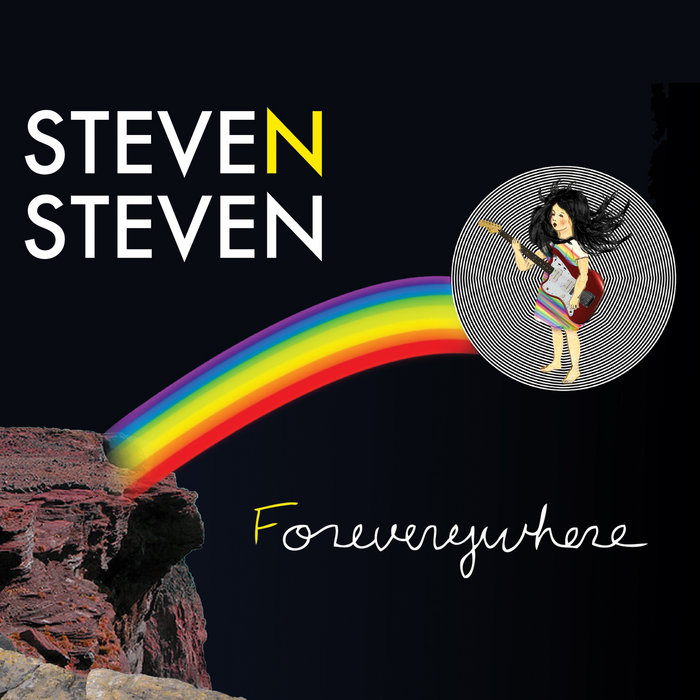
STEVENSTEVEN
ForeverywhereFormer Blue's Clues host and children's media superstar Steve Burns teams up with Flaming Lips multi-instrumentalist Steven Drozd to produce a sprawling, ambitious album that's as laugh-out-loud funny as it is radically sincere. Burns accompanies the listener through a bizarre world occupied by unicorns ("The Unicorn and Princess Rainbow"), giants ("If You're Ginormous and You Know It"), clever ocean critters ("Mimic Octopus"), and more. Sometimes songs are instructional, like "A Fact Is a Gift You Give Your Brain," whereas others are dedicated to exploring feelings of joy, sadness, love, disappointment, and determination ("The Happy Then Sad Then Triumphant Spider," "The Lonely Unicorn Is Never Giving Up!"). Burns knows that kids are just as capable of genuine insight as they are total absurdity, and he manages to walk the line between these two extremes without sacrificing musical quality. The album never wears out its welcome, as Burns and Drozd make every song dynamic and unique, from the garage rock-tinged "Space Rock Rock" to the narrated soundscape of the titular closing track. Foreverywhere is a treat for adults and kids alike, and is sure to enjoy regular rotation around the house.
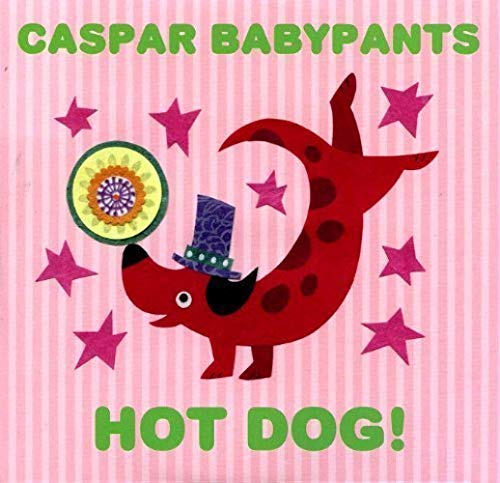
Caspar Babypants
Hot Dog!Erstwhile singer of the Presidents of the United States of America ("Lump," "Peaches") Chris Ballew offers up 19 cozy, kid-friendly tracks with an old school rock-and-roll sensibility. Ballew-as-Babypants is so prolific that I could have filled this post with nothing but his music and that would still be a decent introduction at best... so if he's a hit with your family, you're in luck! Hot Dog! begins with the doo-wop-influenced "Sugar Ant," then transitions into rock-and-rollers like "Crazy Blue Beetle" and "Summer Baby (Let It Ride)," as well as softer tracks like "This Old Whale" and "Eleanor the Elegant Elephant." Songs like "Bunny Brown" and "I Don't Mind" would feel perfectly at home in the repertoire of Buddy Holly and the Crickets. Babypants's world is gentle, absent of the world-shaking revelations of Foreverywhere -- but no less empowering. And for you Beatlemaniacs out there: he has released three albums of Beatles covers -- Baby Beatles!, Beatles Baby!, and Best Beatles! I'm particularly fond of his cover of "Here Comes the Sun," which enjoyed regular play in our program playlist.

Frances England
Blue Skies and Sunny DaysThis gentle, 8-song adventure from kindie veteran Frances England is the perfect soundtrack to a lazy day filled with play, a road trip, or much-needed downtime after a long, stressful day. England immediately sets the tone with the aptly-titled "Carefree," capturing the feeling with verses about school's end, going to the movies, and most importantly, spending time with the ones you love. Despite its title "Into the Wild" maintains a cozy, laid-back approach as England explores the difficult position of being bored and having too much energy. "Not Just My Sister" celebrates the titular sibling ("she's not just my sister, she's my best friend"). "Good Day" is a slice-of-life anthem punctuated with finger snaps and self-backing vocals. "If You Want to Sing Out" encourages little ones to forge their own paths, to express themselves however they're comfortable ("if you want to be me, be me/if you want to be you, be you"). "Mama Said" has the narrator find strength in their mother's advice. "Perfect Tuesday Afternoon" feels like a sonic sibling to "Carefree." Album closer "Watching You Grow" flips the perspective to the caretaker, as England celebrates the joy of watching her little one grow up ("I feel so proud it's hard to measure/A love so big, so deep forever/Watching you grow, watching you grow").
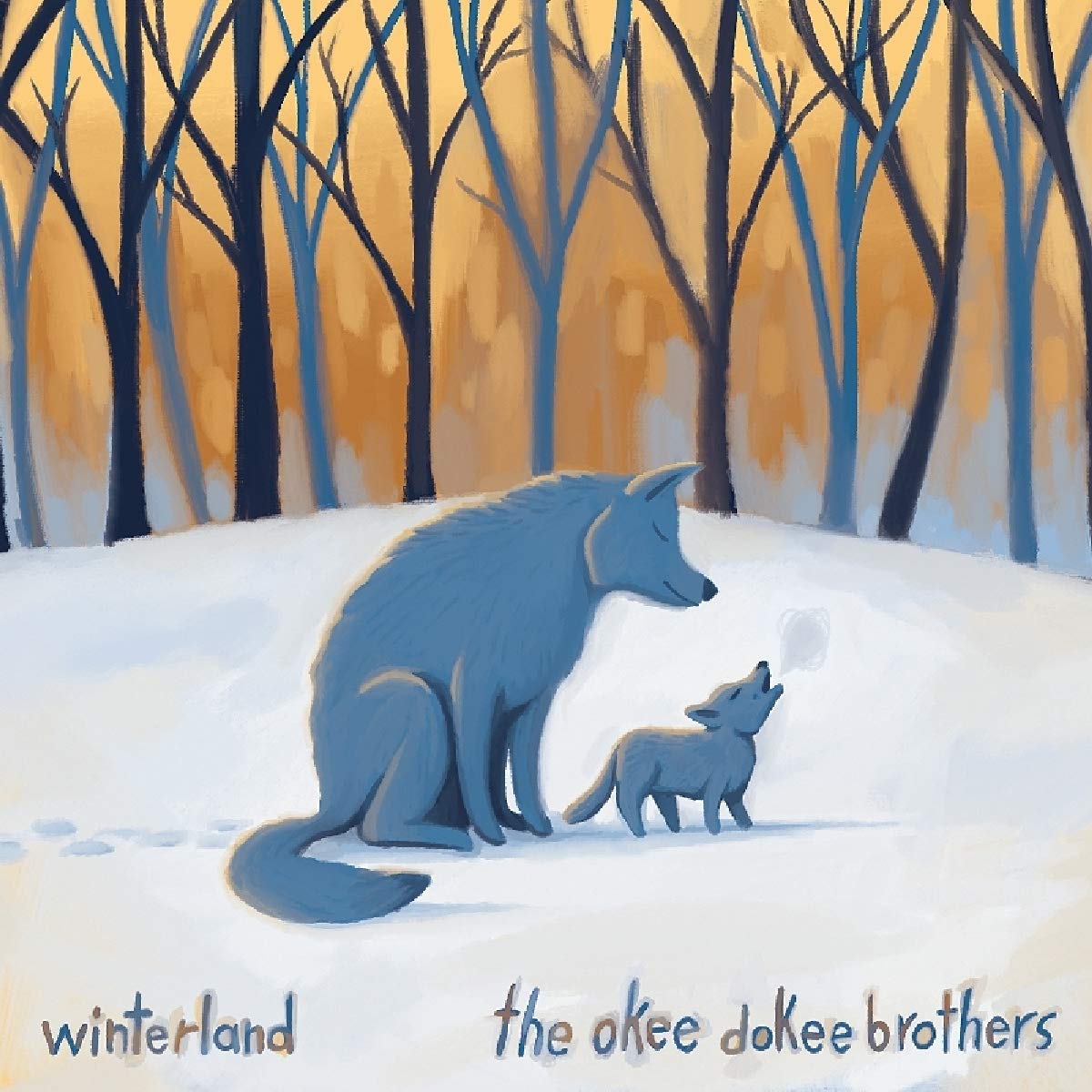
The Okee Dokee Brothers
WinterlandTime for some seasonal fun! Bluegrass musicians the Okee Dokee Brothers celebrate winter, from the first snowfall to the first signs of spring. The Brothers open the album with "Blankets of Snow," a joyous Appalachian-style number complete with hollers and shouts. "Ice Fishin' Shack" portrays the simple joy of spending time with a buddy. Silly banjo-driven tune "The Abominable Yeti" warns listeners about the mythical beast. "You You You," a potential bedtime favorite, thanks the listener for being themselves. The mostly-a cappella interlude "Slumberjack" gives the listener tips on how to fall asleep. The Brothers incorporate ukulele in the self-explanatory "Ukulele in a Snowstorm." "Howl" celebrates being "the wild ones," complete with wolfish howling -- a great song for getting out some excess energy! The appropriately-sleepy "Lazy Day" is accented by muffled brass and yawns. The energy picks up afterward with "North Country Dance Band," followed by the ode to nature "Great Grandmother Tree." Penultimate track "New Year" explores the gentle transition between the old and the new. The album closes with the upbeat "Signs of Spring," pointing out the little moments that make the incoming season so lovely, while acknowledging that, like the cycling seasons, "death is part of life." For fans of Mumford & Sons, the Lumineers, Fleet Foxes, or anyone looking for the perfect album to accompany a cold night in.
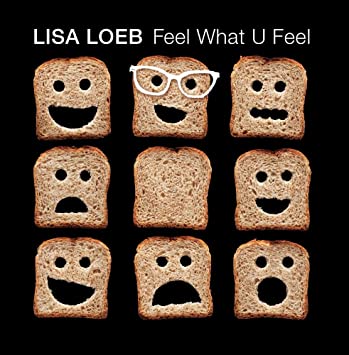
Lisa Loeb
Feel What U FeelLisa Loeb kicks off this sunny slab of pop rock with the infectious "Moon Star Pie (It's Gonna Be Alright)," assuaging childhood anxieties with reassurances and advice ("twist yourself up like a cinnamon pretzel, connect the dots with the spots of your freckles"). "Say Hello," which encourages listeners to overcome that-all-too-awkward feeling when one meets someone new, is bolstered by bombastic orchestral flourishes. Craig Robinson (The Office, Brooklyn Nine-Nine) hops onto the title track, which finds him trading off kid-friendly raps about feelings and why it's okay to experience them:
"Feeling weird-o
Itchy beard-o
Something’s just not right
Rat race
Need space
Skin’s on too tight
Guess what? It’s okay!
Go on and feel what u feel today..."The gentle chords of heartstring-tugger "I Was Here" are perfect accompaniment to the track's self-affirming lyrics. "You Can Count on Me" and "The Sky Is Always Blue" assure the listener that they are not alone and that things will work out in the end. "Wiggle" is an instructional dance number. Craig Robinson rejoins Loeb for "It's All Right to Cry," telling kids that, even if they're strange, feelings are real, and they change, and that's okay. Loeb rounds out the album with a lullaby version of "You Can Count on Me" -- another potential bedtime favorite.
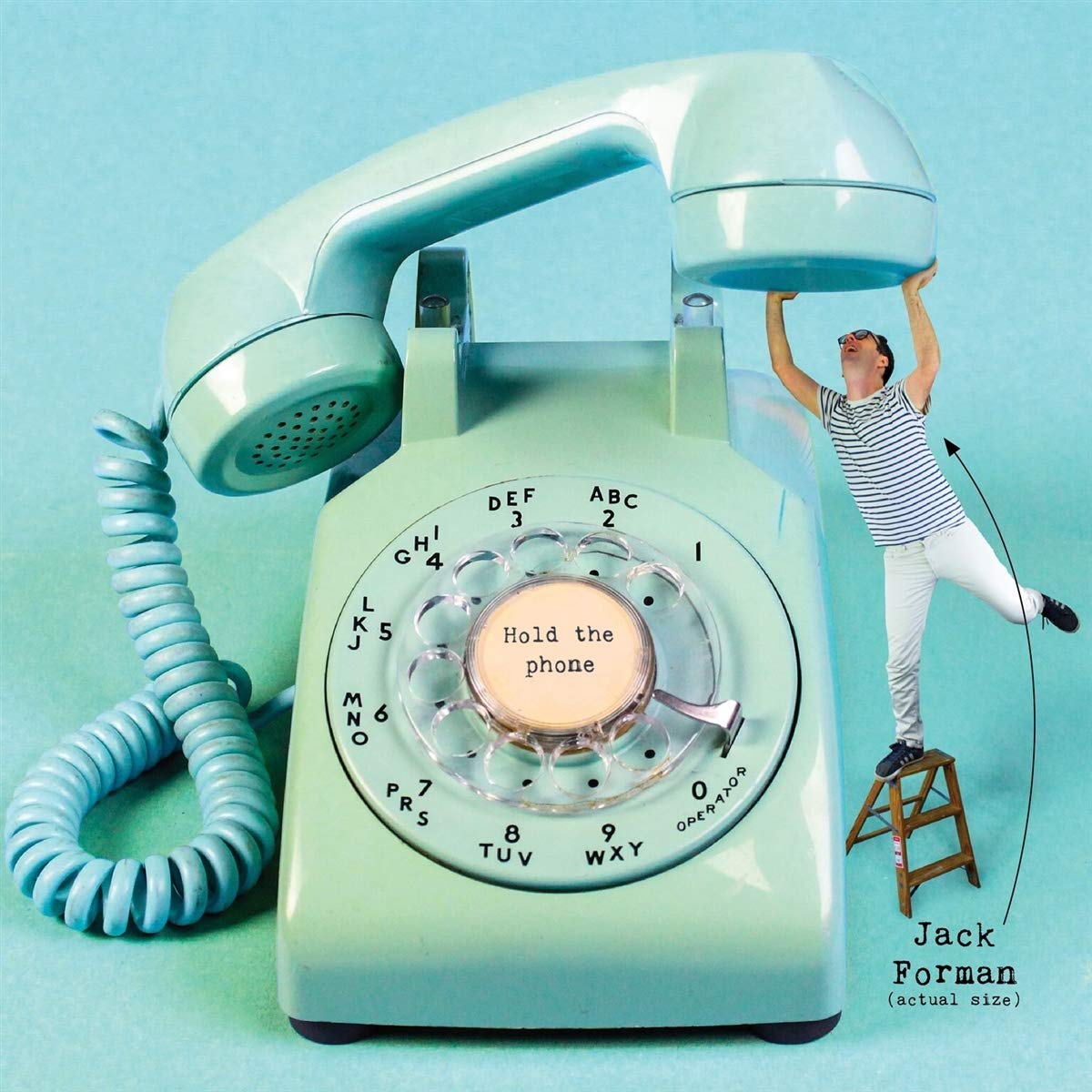
Jack Forman
Hold the PhoneRecess Monkey alum Jack Forman opens this indie pop-influenced opus with "The Sun Comes Up Again," an ode to our favorite star and the things it does for us. Ska number "I Had to Pee (On a Ferris Wheel)" describes this exact nightmare scenario with side-splitting detail. Harry Potter fans will enjoy "Little Dobby Does It," a sonic biography of the hapless house elf. "The Cat Walk" paints a portrait of a particularly arrogant furry family friend, complete with meowed vocals. "Surprise Party" invites the listener to join a birthday party. "I Can't Believe I Ate the Whole Thing" finds the narrator lamenting his decision to eat an entire birthday cake, a sleeve of Girl Scout cookies, and other treats. Forman utilizes his upper register in "Tooth Fairy Works Nights," paying tribute to that unsung provider of small bills. The chaotic "Assembly Line" describes all the little things that have to happen just to get a little one to school. If you're looking for something on the silly side, be sure to check out Hold the Phone.
Looking for some personalized selections? Fill out this form and you’ll receive a customized list direct to your inbox!
 Youth Services Librarian Chris
Youth Services Librarian Chris -
Get Moving! - The Benefits of Dance and Creative Movement
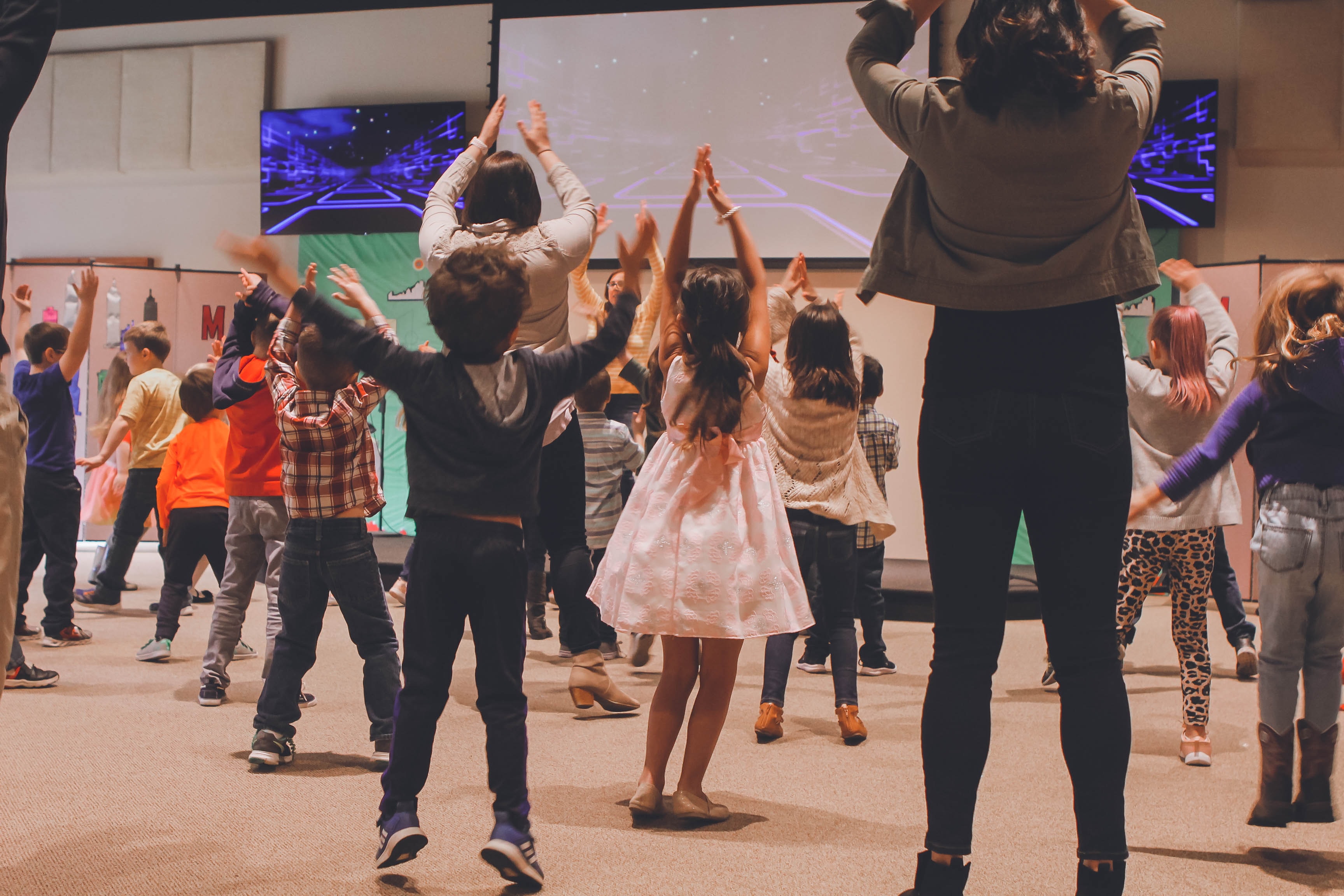
Dance is so much more than a ballet or tap class! Dance and creative movement are great indoor, at-home activities that can benefit your young child as well as get older children and caregivers moving!
Both structured dance with prescribed moves and free-flowing creative movement have real benefits.
- Physical Fitness - the most obvious benefit of boppin' to the beat is that it is great exercise. Plus a bonus benefit of getting the wiggles out!
- Body Awareness - young children may not always know exactly what their bodies can and can't do or how to stay in their own space. Dance and creative movement helps them learn coordination and spatial awareness.
- Social Skills - everyone moves through the world a little differently and dance helps show that not everyone will interpret the beat or rhythm of life the same way. Be you always!
- Concentration - following instructions or trying to remember what comes next in a sequence of events are important skills in early childhood development. Dance and creative movement give children a fun and active way to work on these important skills.
These are just some of the great benefits that dance and creative movement have to offer.
Here's a few ways you can enjoy the benefits at home:
- Plan a dance party! Make a short playlist with a couple songs that have prescribed movements and a couple songs that are just fun to bounce around to. Dance with your child so they have a model to follow when in doubt about their own creative confidence. Register for our Virtual Story Time Dance Party on February 16, 2021!
- Play freeze dance! Put on a few of your favorite kid-friendly tracks but make sure your child knows when the music stops they stop. Play around with giving instructions on how to freeze - like make a silly face or pose like a statue.
- Dance with scarves! Sometimes figuring out how to move is hard. Having a manipulative helps focus the movement and gives an opportunity for following instructions.
Need help finding some music? Check out thisblog post or contactYouth Services for some recommendations.
 Youth Services Librarian Demitra
Youth Services Librarian Demitra -
11 Books to Read for National Native American Heritage Month
During Native American Heritage Month, and all year long, one of my top priorities is to ensure that the depictions of Indigenous and Native people in the books I read and promote are authentic and accurate. Many traditional Thanksgiving-themed books contain harmful portrayals and stereotypes of Indigenous and Native communities, but these contemporary #OwnVoices selections are written and/or illustrated, and celebrated by the communities they represent.
If you’re interested in learning more about how to interrogate children’s books that depict Indigenous and Native communities, I highly recommend American Indians in Children’s Literature, a blog run by Debbie Reese (Nambé Pueblo) and Jean Mendoza. Reese and Mendoza also adapted a book for adults by Roxanne Dunbar-Ortiz for a middle grade and young adult audience, called An Indigenous Peoples’ History of the United States for Young People, which chronicles the settlement of the “new world” from the perspective of Indigenous people, and highlights their resistance and resilience.
For more book recommendations, check out this book list from the American Indian Library Association, and the past and current winners of the American Indian Youth Literature Award.
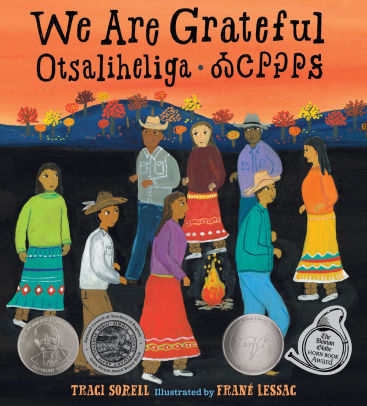
We are Grateful: Otsaliheliga by Traci Sorell, illustrated by Frane Lessac
Learn about a year in the life of contemporary Cherokee family, and the ways in which they express gratitude throughout each season.
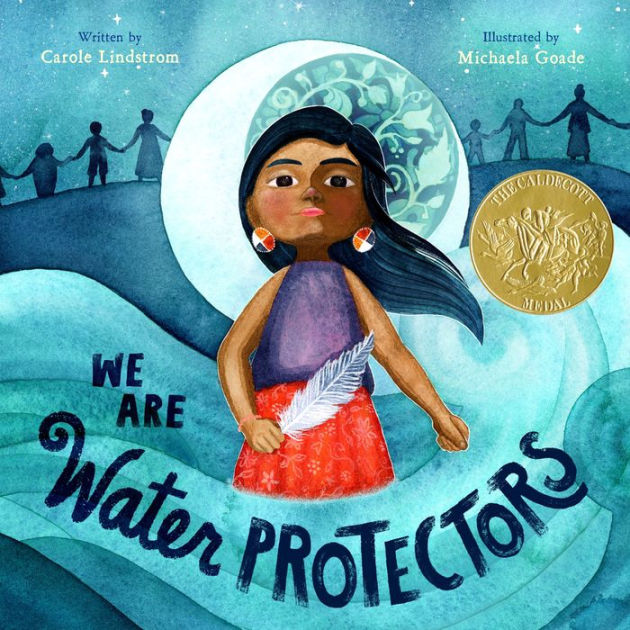
We are Water Protectors by Carole Lindstrom, illustrated by Michaela Goade
A powerful and poignant look at the Indigenous fight against the Dakota Access Pipeline, and the interconnectedness of all inhabitants of Mother Earth.

Fry Breadby Kevin Noble Maillard, illustrated by Juana Martinez-Neal
Fry bread might seem simple on the surface, but its history is not. Dive into this almost 150-year long tradition and its importance to Native American families of many different nations (Did you know there are about 573 federally recognized Native American tribes in the United States currently?). The author even includes his own recipe, so you can try it yourself!

A Day with Yayah by Nicola I. Campbell, illustrated by Julie Flett
Set in the Nicola Valley of British Columbia, Yayah takes her grandchildren on an adventure in nature, teaching them to forage plants and mushrooms, and sharing her vast knowledge of the natural world.
Jingle Dancerby Cynthia Leitich Smith, illustrated by Cornelius Van Wright and Ying-Hwa Hu
Jenna daydreams about jingle dancing, a tradition that is shared by the women in her family, and can’t wait until she can dance at the next powwow. The only problem is, Jenna doesn’t have enough jingles for her dress. Join Jenna as she collects all the jingles she needs on her journey to her first official jingle dance. A beautifully illustrated and heartwarming tale of tradition and family, with an author’s note about the origin and varying practices of jingle dancing at the end.
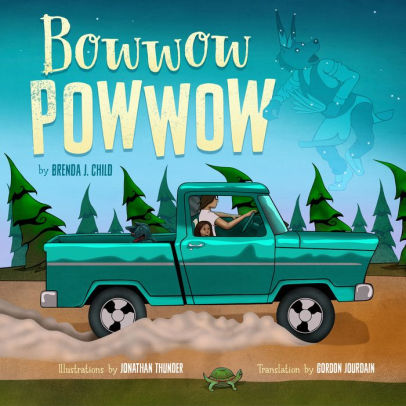
Bowwow Powwow by Brenda J. Child, translate by Gordon Jourdain, illustrated by Jonathan Thunder
Windy Girl loves to hear Uncle’s many vibrant stories while riding to the powwow with her dog Itchy Boy. One night after taking in all that the powwow has to offer, Windy falls asleep to the steady drumbeat, snuggled up with Itchy Boy, and dreams of jingle dancers, traditional dancers, a visiting drum group, and so much more--all of them with paws and tails, just like Itchy Boy! This is a joyful tale in celebration of the magic of the powwow.

At the Mountain’s Base by Traci Sorell, illustrated by Weshoyot Alvitre
At the mountain’s base, there is a Cherokee family living in a cabin, patiently weaving, singing, cooking, worrying, and waiting for the safe return of a relative serving as a pilot in the United States Armed Forces. This book pays tribute to Native women such as Ola Mildred “Millie” Rexroat, who have served, and continue to serve their country by going to war.
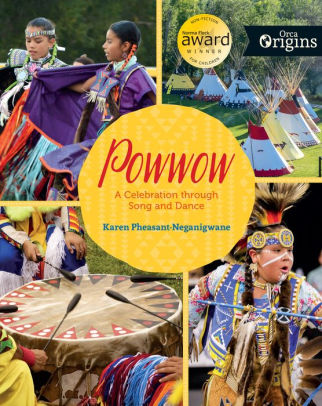
Powwow: A Celebration through Song and Dance by Karen Pheasant-Neganigwane
A comprehensive history of the Indigenous tradition of the powwow, from its origins, to a breakdown of powwow culture, to an explanation of various songs and dances, and a look at powwows as they occur in modern days throughout the United States and Canada. With the author’s family background and photos interspersed, this is a powerful and thorough tribute to the powwow.
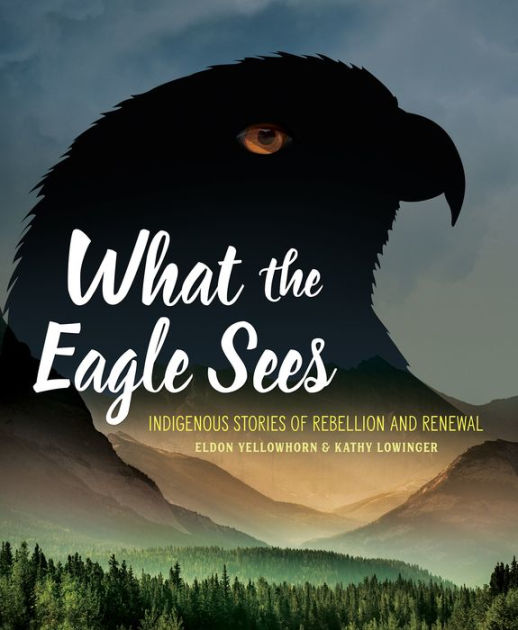
This is a nonfiction book that chronicles the many invasions that Indigenous people have faced throughout history, and how they defended themselves, fought back, and sustained their livelihood. From the Vikings to Christopher Columbus, just to name a few, these stories are all told from an Indigenous perspective, one that we don’t often see in many of our history books.
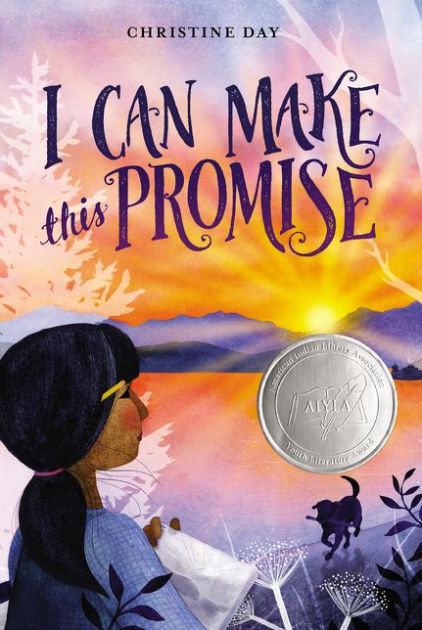
I Can Make This Promise by Christine Day
For most of her life, Edie has always known that her mom was adopted, and that Edie has Native American heritage, but that is pretty much the extent of her knowledge. Join Edie as she discovers a mysterious box in her attic, which contains a photo of a woman who looks just like her, and begins a journey to uncover her family’s history, no matter how difficult it may be.
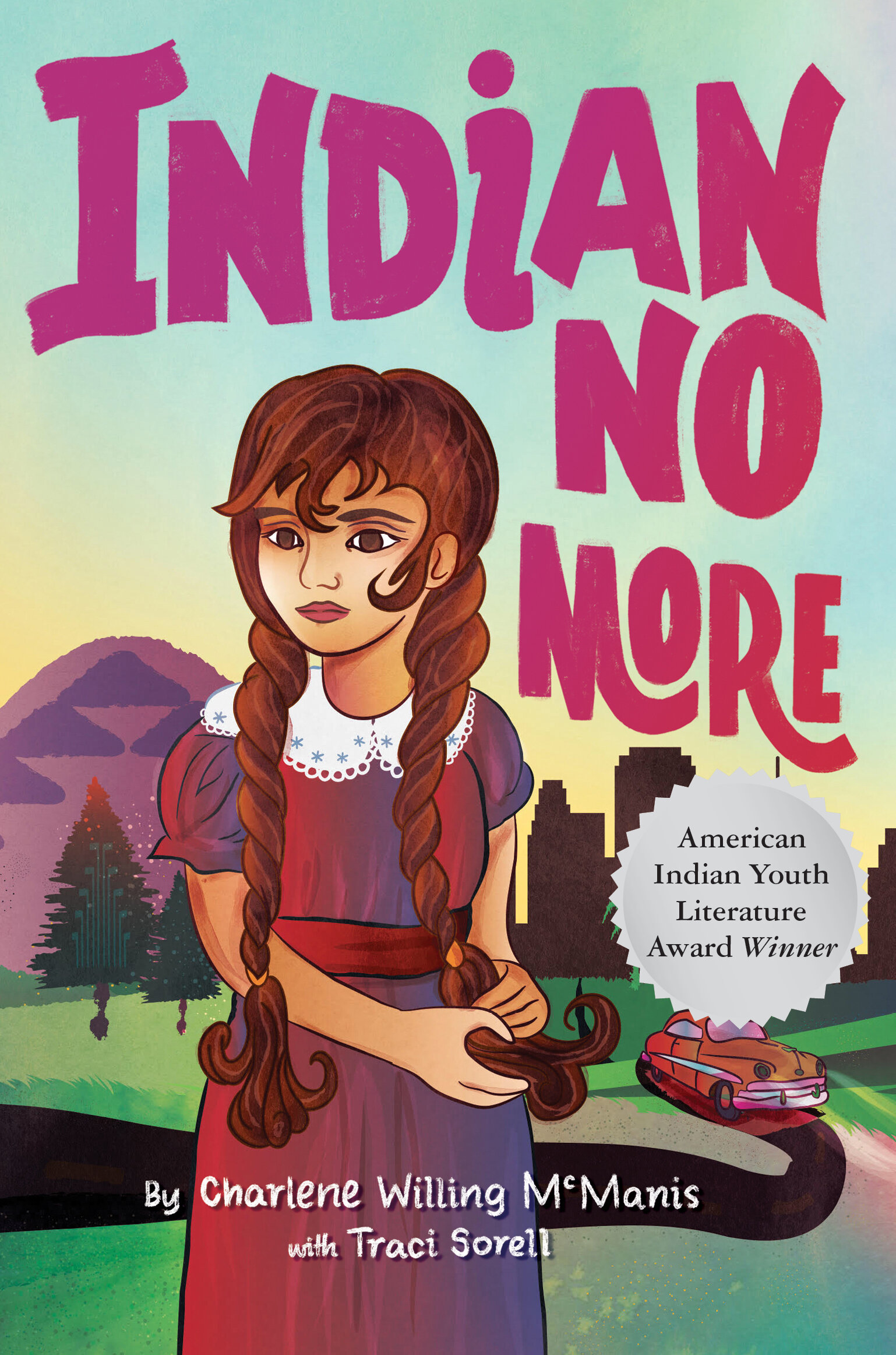
Indian No More by Charlene Willing McManis with Traci Sorell
A heartbreaking but necessary read, set in 1957, this book tells the story of Regina and her family, who are Umpqua and have always lived on the Grand Ronde reservation. Their world is turned upside down when a bill that is signed into law mandates that Regina’s tribe no longer exists, and they are displaced, having to move from Oregon to Los Angeles to find work. For the first time in her life, Regina has had to grapple with racism that is directed toward her, and the kids in her neighborhood, and must try to keep her Native identity alive in a completely unfamiliar and unwelcoming environment.
 Youth Services Assistant Librarian Stefanie
Youth Services Assistant Librarian Stefanie -
Daniel Tiger on Kanopy Kids: When Something Seems Bad, Turn It Around, and Find Something Good
Watch “Daniel’s Birthday/Daniel’s Picnic” on Kanopy Kids using your Barrington Area Library card number to log in, and come back to this blog post to enjoy some family activities that will enhance your child’s learning around the episode.
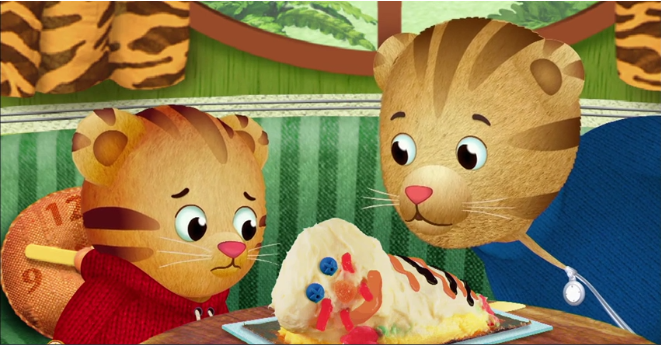
Here are some questions that will help you unpack some of the topics in the episode with your child.
Daniel's Birthday
- Can you think of your perfect cake or birthday treat? Draw a picture with your grownup and/or describe what your perfect cake or treat would look, feel, and taste like.
- When Daniel’s cake gets smushed, he is disappointed, but his dad helps him to realize that it probably still tastes pretty yummy! Can you think of a time when something like that happened to you? How did you feel? Even though you were disappointed, can you think of something good about the situation?
Daniel's Picnic
- Daniel, Miss Elaina, and Prince Wednesday are pretty disappointed when it starts to rain on their picnic. I know that I am feeling a little disappointed that it’s getting colder outside, and I won’t be able to hang out with my family and friends outside as much. Can you brainstorm ways that you can hang out with your family and friends in the fall and winter virtually, such as a virtual picnic or a fort-building night?
Below are some other activities to try as a family.
- Check out PBS Kids: Life’s Little Lessons on disappointment activity and conversation guide.
- Check out a cookbook from the library and bake something with your grownup.
- Watch or rewatch thePBS Kids: Daniel Tiger’s Neighborhood special called “Won’t You Sing Along With Me?” about some of the challenges preschoolers are facing because of the pandemic.
- Grownups: Make a plan for talking to your child(ren) about your holiday plans this year. Read this article called“6 Tips for Preparing Your Kids for a Socially Distanced Holiday Season” for some helpful advice.
Here is some further reading on the topics discussed in the episode.
 Youth Services Assistant Librarian Stefanie
Youth Services Assistant Librarian Stefanie -
Daniel Tiger on Kanopy Kids: In Some Ways We Are Different, But In So Many Ways, We Are The Same!
Watch “Daniel’s New Friend” on PBS Kids, and come back to this blog post to enjoy some family activities that will enhance your child’s learning around the episode.

Here are some questions that will help you unpack some of the topics in the episode with your child.
- What does it mean to be alike and different? Ask your child(ren) how the characters in the show are alike? How are they different?
- Talk to your child(ren) about things that they have in common with their family or friends. What do you all like or do that is the same? Then ask them about the ways in which you all are different. Do you have different hair colors, have a different favorite food, or are you different heights?
Below are some other activities to try as a family.
- Check out the activities on thePBS Kids: Life’s Little Lessons Family Activity Guide.
- Grownups: Check out the first installation of our Keep It Real: Preparing Kids for a Diverse World program, on Tuesday, October 27 at 7:30pm, in collaboration with Be the Change Barrington, where participants will read and discussRaising White Kids by Dr. Jennifer Harvey.
- Explore the resources onPBS Kids Talk About Race and Racism, especially thisdiscussion guide.
Here is some further reading on the topics discussed in the episode.
 Youth Services Assistant Librarian Stefanie
Youth Services Assistant Librarian Stefanie -
Five Things You're Already Doing to Raise a Reader
There are lots of articles about all the many things yououghtto be doing to raise a smart, successful, independent, empathetic, basically perfect human being. This is not one of those articles! I’m happy to tell you that raising a reader is not an intimidating challenge, and you are already doing it better than you think. In fact, I bet you’re crushing it! Here are the five activities that prepare a child to learn to read in the first five years of their life.
1. Read
Research shows that reading even to babies isbeneficial for their brain development. But reading to babies, and especially to walking toddlers, can be very difficult. Some children take to books like cats to cream; while others… not so much! It doesn’t mean you should be worried, or that you should force a child to read when they would rather toddle around or play with a ball. Here are some other ways to share “reading”:
- Keep board books available along with toys as a part of play time.
- Let your child flip through the pages, even if it’s too fast for you to read the words. They are learning how a book “works,” which is important, too!
- Point and identify ANY words or images, even outside of books. You are teaching your child that pictures mean something, which is the basic building block of reading.
- Pick up a book - one from your shelf, or even one of your child’s - and quietly read in front of your young child, even for a few minutes. Demonstrate that it’s a valuable part of your life.
- Come to one of our story times! We will share fun and new-to-you books, as well as songs and rhymes that you can do at home.
2. Talk
The more sounds and words your child hears, the better equipped she is to start pulling from that bank of phonemes when she starts learning how reading works. You’re also giving your little one the chance to practice the oh-so-important back-and-forth rhythms of conversation, even if they are just babbling with you, like in the video below. Sometimes it can be exhausting to think of things to talk about with your baby or toddler - try narrating whatever you’re doing. For instance, driving, cooking, cleaning, playing.
3. Play
Play is physical, mental, emotional, and social. It’s practice for all of life, including reading. Playing with small objects develops fine motor skills needed for holding books, turning pages, and writing letters. Playing with anything enhances critical thinking - think about cause & effect (block towers knocked down!), object permanence (peek-a-boo!), and problem solving (puzzles!) - all of which will become more abstract as reading comprehension and narrative skills develop. Playing in an imaginative way increases a child’s understanding of emotions (playing “bad guy” and seeing the consequences on someone else) and narrative structures (First, this happens, then….). There’s SO MUCH benefit to play, and thankfully kids need no encouragement from us to do it. But adult facilitation can add much to play, even just the bonding that naturally happens through enjoyable shared experiences.
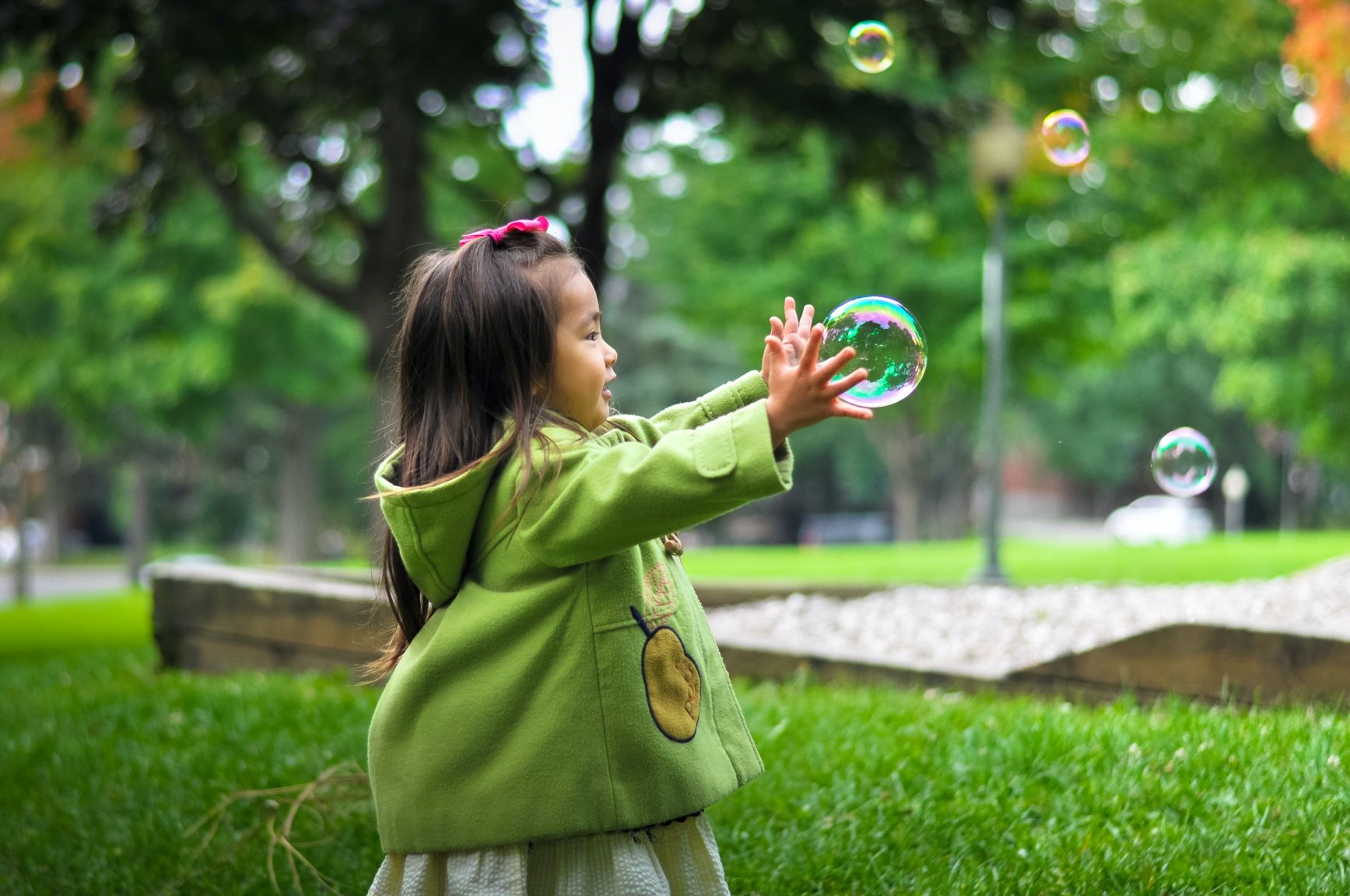
Photo by Leo Rivas on Unsplash
4. Sing
Any kind of music can be beneficial to ababy’s development, but singing is in particular a valuable pre-literacy activity because it slows down our speech. Pairing a note with a sound and a beat gives little brains more time to process phonemes. (Sing “Mary Had a Little Lamb” in your head, and you’ll notice how each syllable gets its own separate note.) Babies don’t care if you’re tone-deaf, so sing with abandon. (Though if you just can’t stand the sound of your voice, trysayingthe lyrics on beat.) Songs often have the added benefit of rhyming, which gives little brains more opportunities to hear and connect similar sounds.
5. Write
Don’t panic: your 2-year-old should not be writing their name yet! Writing as a pre-literacy activity just means preparing your child for the eventual fine-motor skills that will be required to grasp a pencil and create recognizable letters on a page. It really means strengthening little finger muscles! Here’s what “writing” might look like:
- Grasping or sorting small objects
- Fingerplay rhymes & games
- Baby sign language
- Playing with or using crayons, markers, glue sticks, chalk, etc.
- Tracing lines or letters
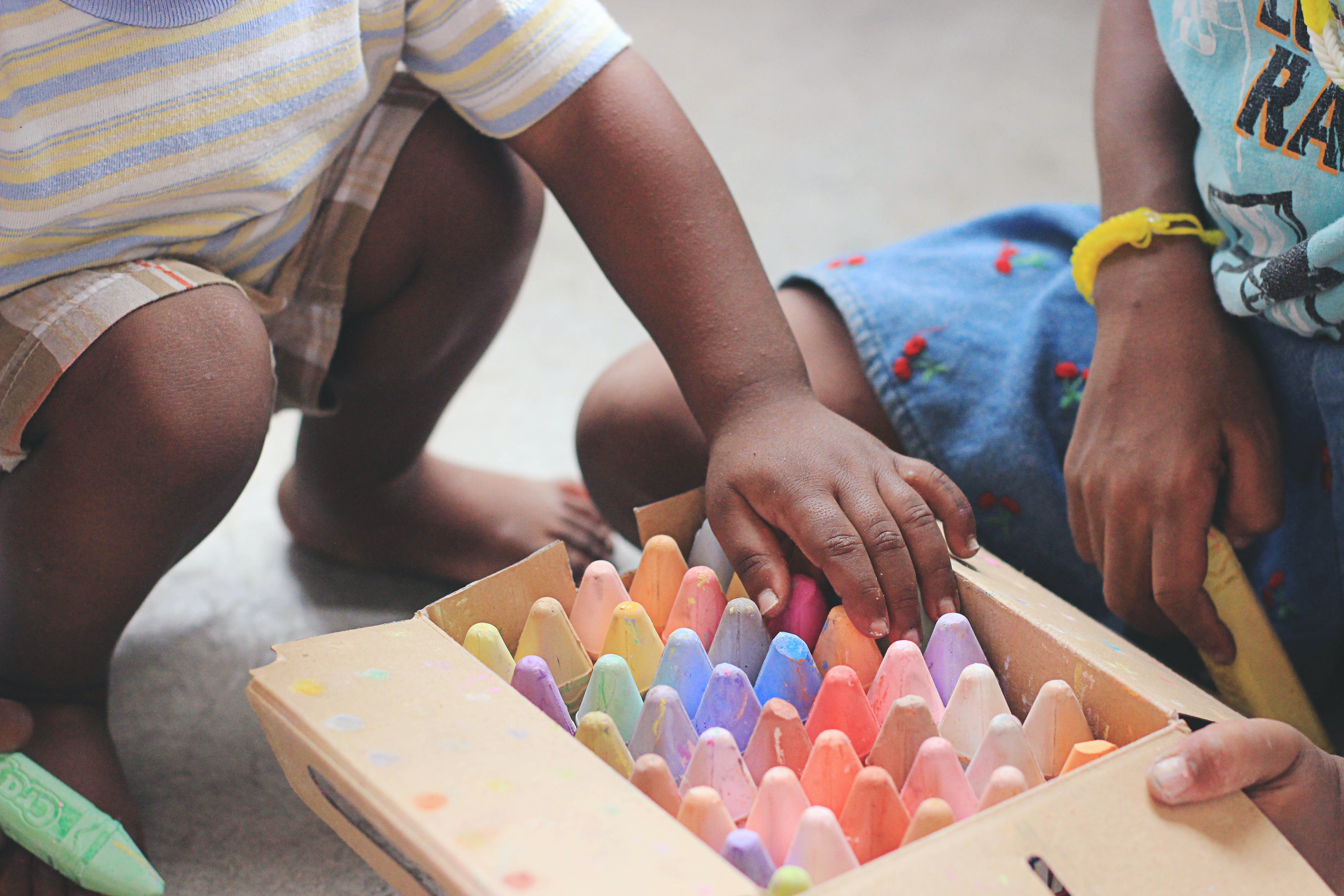
Photo by Tina Floersch on Unsplash In all likelihood, you recognize at least a few of these activities in your daily life with a very young child. Pat yourself on the back - you are doing it! You are raising a reader!
 Youth Services Librarian Allison
Youth Services Librarian Allison -
Let's Play Pretend
Anyone who knows about the Barrington Area Library Youth Services Department knows that we love play of all kinds! One type of play that we just love is pretend play - from putt
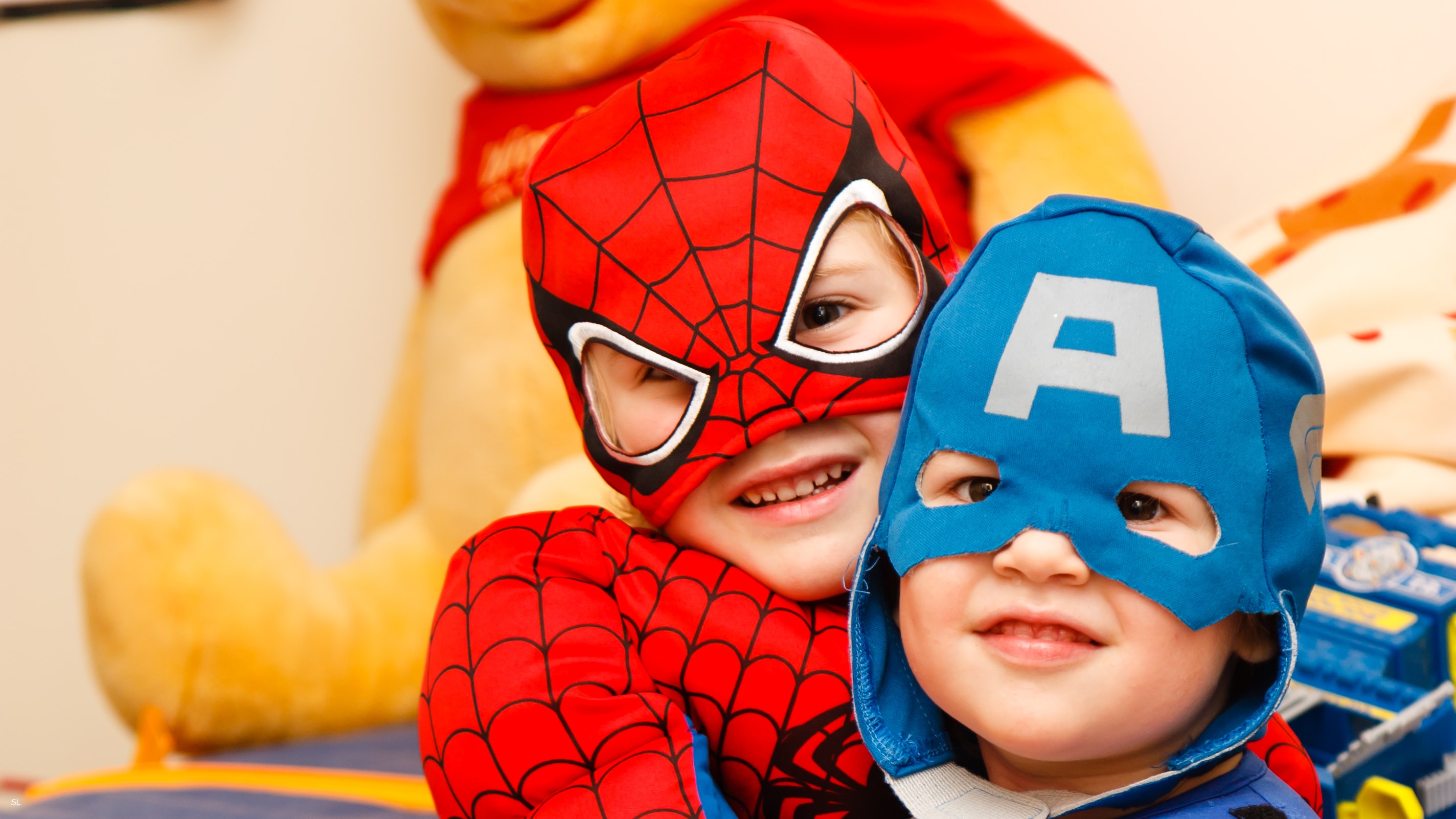 ing on some dress-up clothes to transform into a puppy dinosaur, to using play kitchen supplies to play house, to building a ship with blocks to sail the wide open seas. Sometimes children may not even need any toys or manipulatives to come up with fantastical scenarios.
ing on some dress-up clothes to transform into a puppy dinosaur, to using play kitchen supplies to play house, to building a ship with blocks to sail the wide open seas. Sometimes children may not even need any toys or manipulatives to come up with fantastical scenarios.Even when the pretend play seems so outlandish that it no longer has any connection to reality, children are engaging in a process that will greatly benefit them later in life.
Most obviously, pretend play is a great way for children to flex their creative skills but it also allows them to work on critical thinking and problem solving skills. By working through the scenarios they create they are building cognitive abilities that will translate to real world skills.
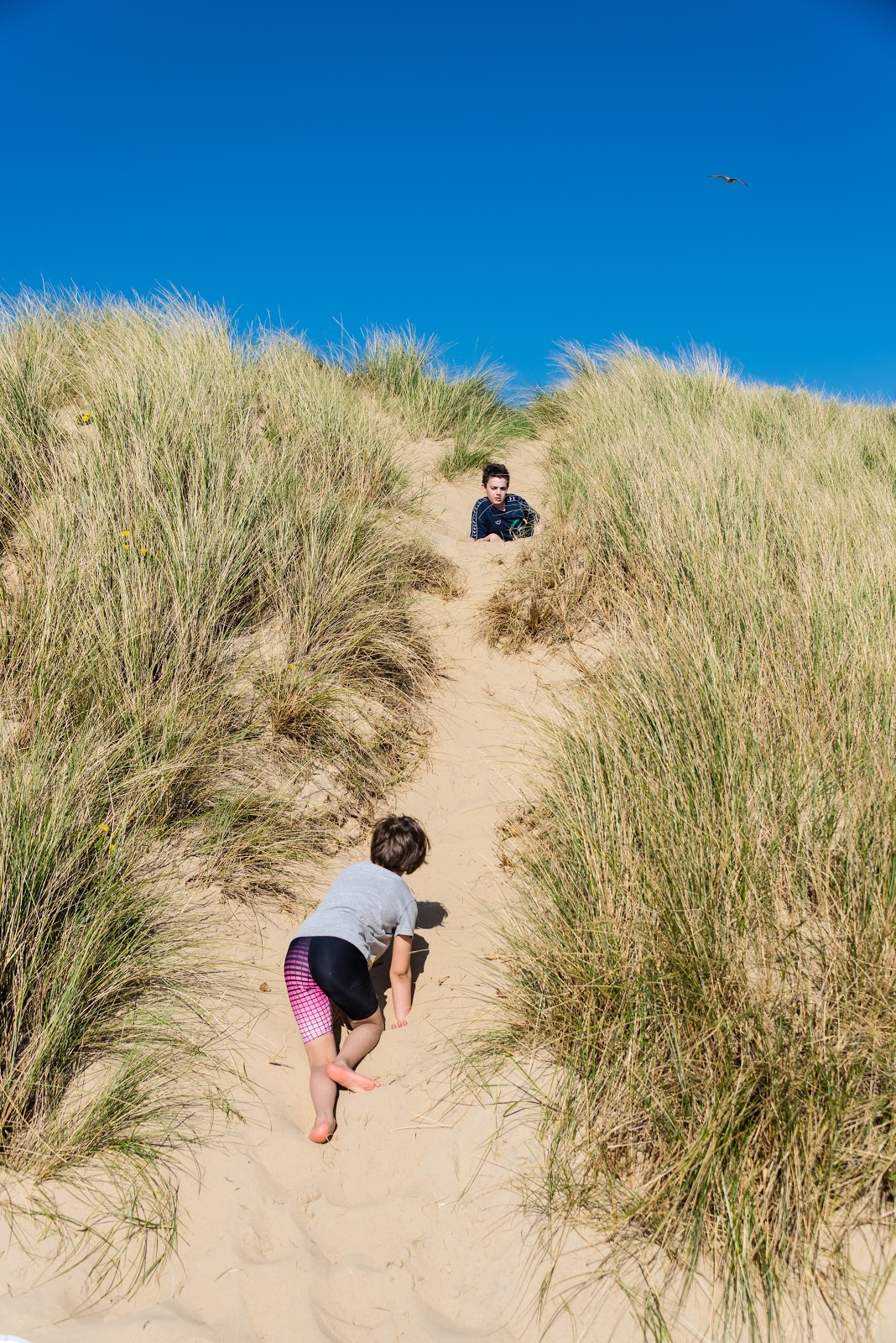 Pretend play also allows children to develop social and emotional health. Engaging in cooperative pretend play means that children are learning how to navigate social situations and learning how to interact with others, such as taking turns, making compromises, and understanding others. It also helps regulate emotional responses. Becoming too aggressive or throwing a tantrum if things don’t go the child’s way will inevitably stop the play, and no one wants that! Pretend play is also a great place for children to work through real life emotions, such as being scared or upset. They can work through these big feelings in a safe space and learn how to handle their emotions once they leave their imaginary world behind.
Pretend play also allows children to develop social and emotional health. Engaging in cooperative pretend play means that children are learning how to navigate social situations and learning how to interact with others, such as taking turns, making compromises, and understanding others. It also helps regulate emotional responses. Becoming too aggressive or throwing a tantrum if things don’t go the child’s way will inevitably stop the play, and no one wants that! Pretend play is also a great place for children to work through real life emotions, such as being scared or upset. They can work through these big feelings in a safe space and learn how to handle their emotions once they leave their imaginary world behind.If that wasn’t enough, pretend play also helps develop language and communication skills. It takes a lot of non-verbal cues, talking it out, and clearly communicating the scenario for a pretend play session to be successful and fun for all involved - who wants to play if you can’t figure out what’s happening? Children will quickly learn how to use language and communicate with one another to provide themselves with the best play experience possible. It also gives them a chance to test out new vocabulary they may have learned at a visit to the doctor, zoo, or even the grocery store.
We all know how great pretend play is, but what can you do as a parent to make sure they are getting enough of the good stuff to make it happen?
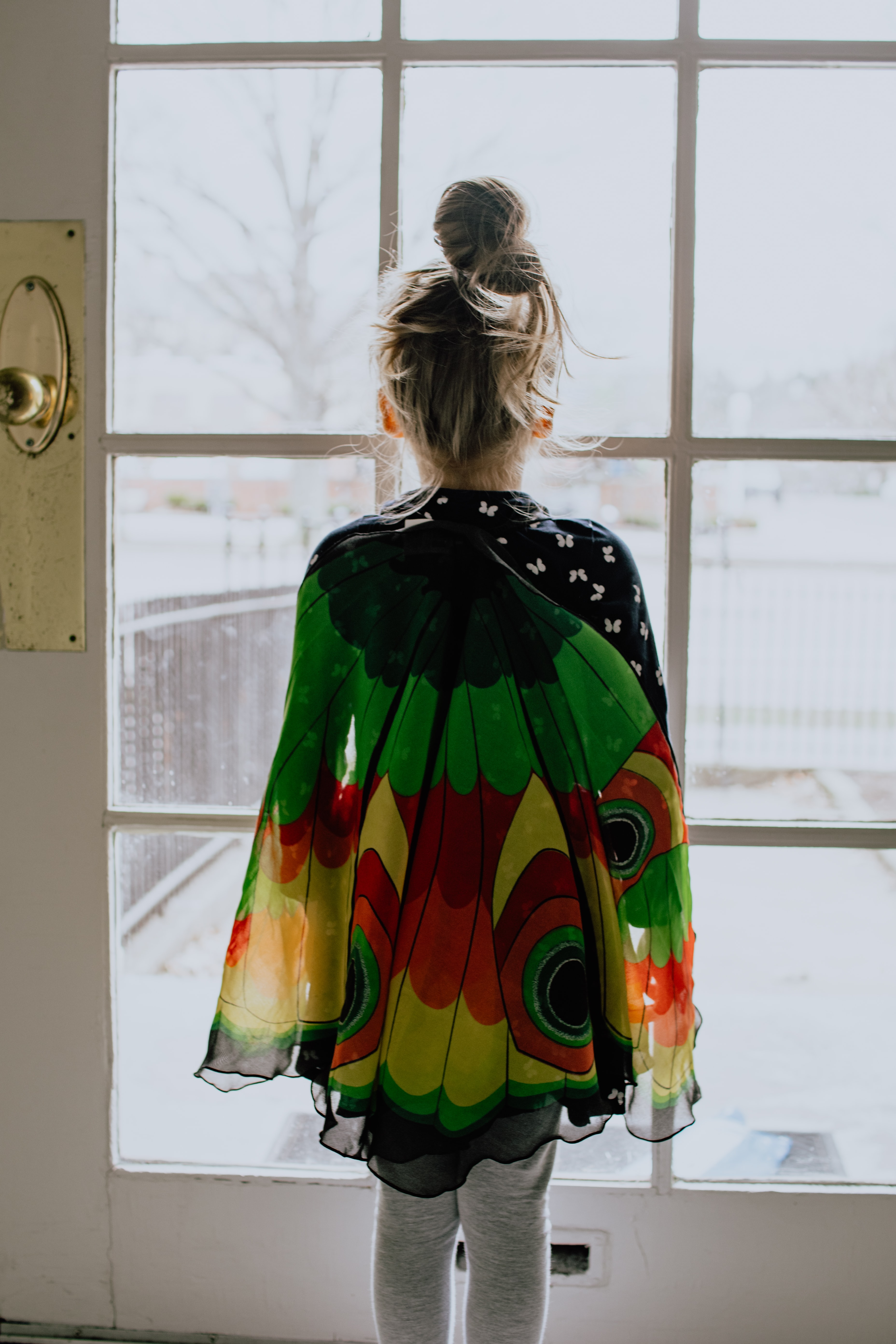 Talk to them. As you go through your day explain what you are doing and point things out to them - this increases vocabulary and gives them the building blocks to create their pretend worlds.
Talk to them. As you go through your day explain what you are doing and point things out to them - this increases vocabulary and gives them the building blocks to create their pretend worlds. Provide some simple props. While there are some really great high tech toys out there, sometimes simple is best. A few dress up items, a couple dolls, and even some (child safe) kitchen items you no longer need are all fair game.
Encourage them. As children are building up an imaginary world, they may want to tell you all about it. Ask some questions and let them work through the answers all on their own. Sometimes they may not make much sense to us, but they are working on it!
Further Reading
The Need for Pretend Play in Child Development
Why Pretend Play Is Important to Child Development
8 Ways to Encourage Pretend Play in Kids
 Youth Services Librarian Demitra
Youth Services Librarian Demitra -
Let's Talk About Racism: e-Books and Online Resources for Families
Help your child better understand the injustices and violence in our society with these resources that address racism and activism.
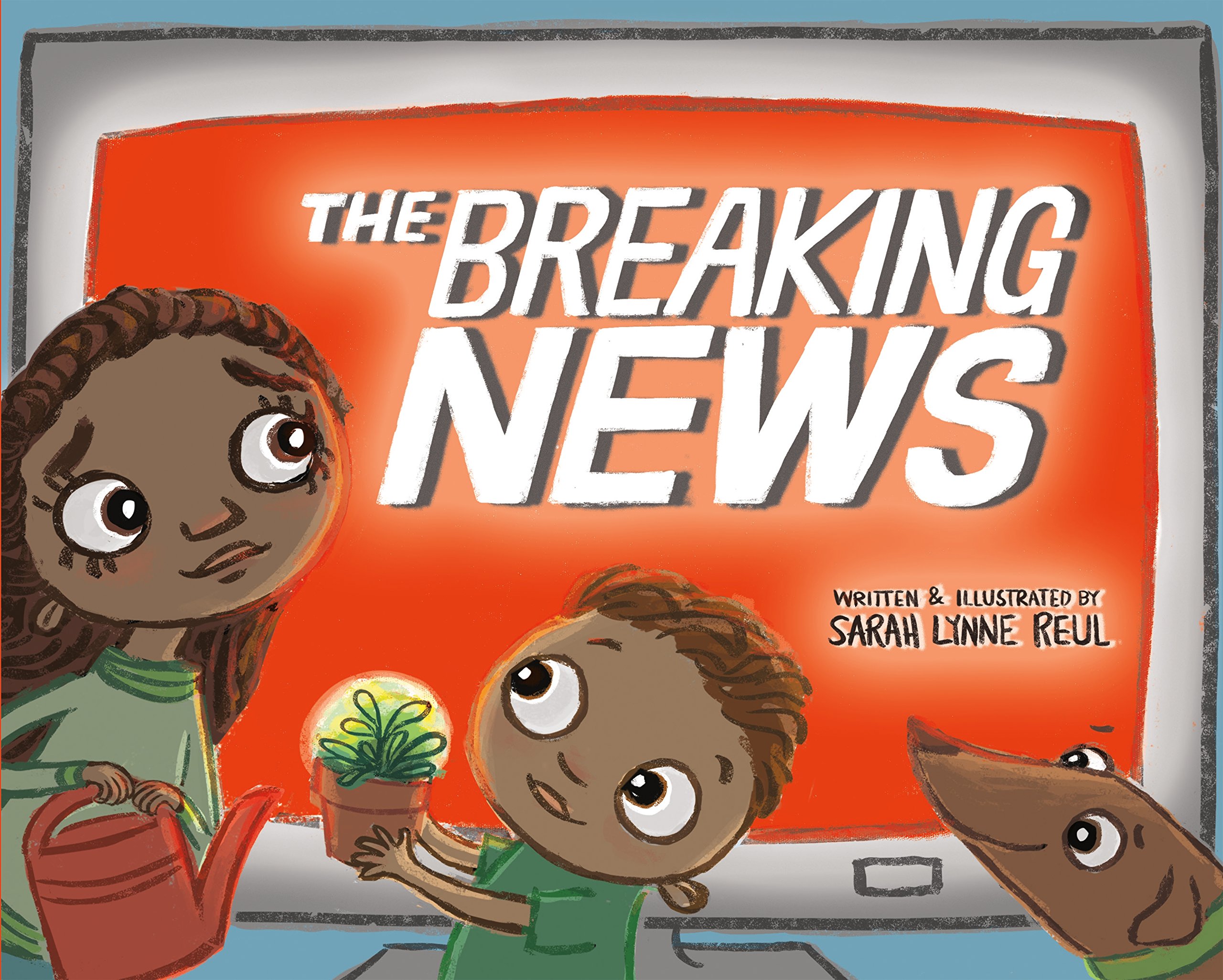 The Breaking News by Sarah Lynne Reul
The Breaking News by Sarah Lynne Reul
When devastating news rattles a young girl's community, her normally attentive parents and neighbors are suddenly exhausted and distracted. At school, her teacher tells the class to look for the helpers—the good people working to make things better in big and small ways. She wants more than anything to help in a big way. A picture book addressing the difficulties of community trauma, and the ways every person can make a difference. Good for sharing with ages 4-8.The author also has provided a read-along video.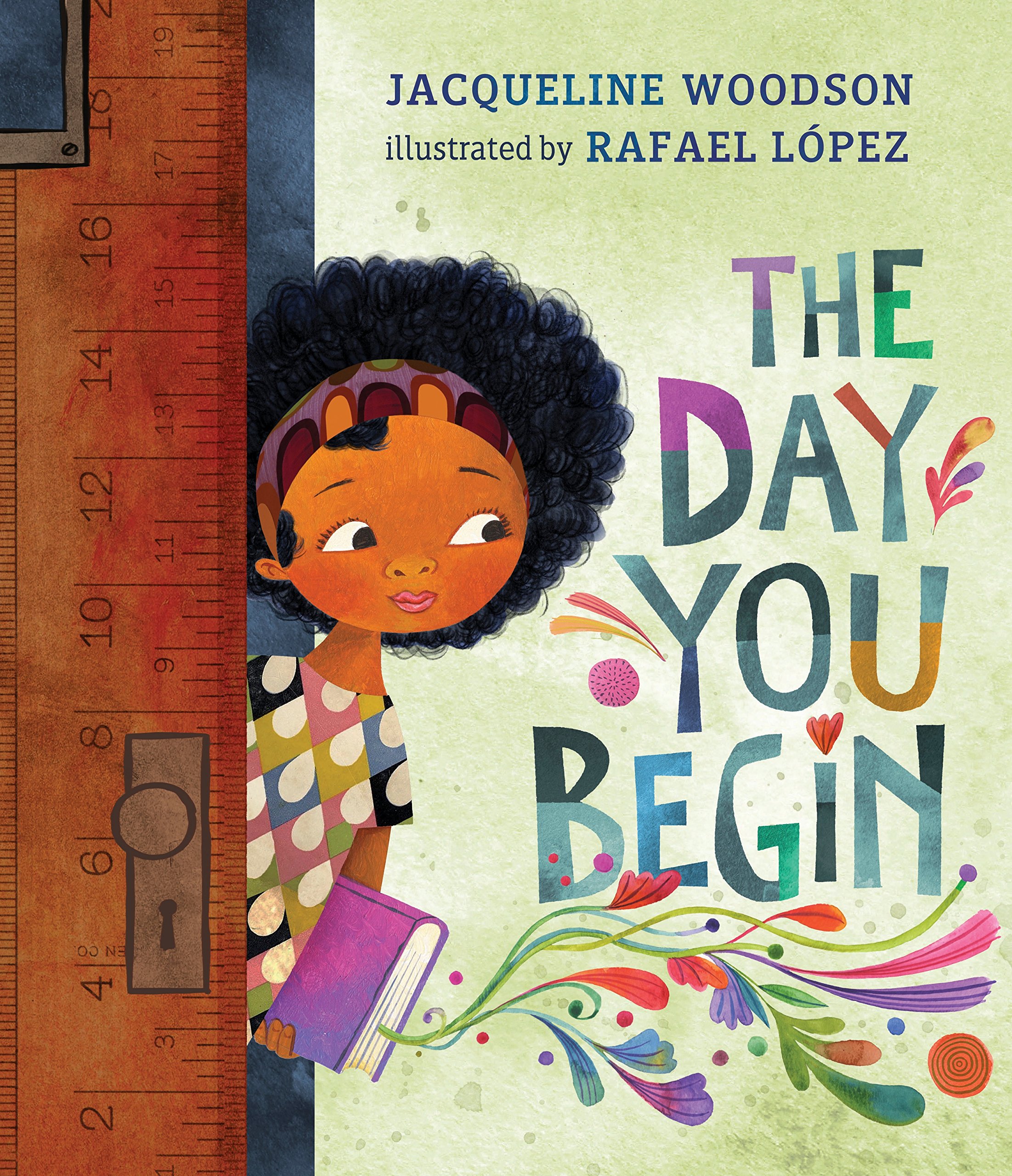 The Day You Beginby Jacqueline Woodson and Rafael López
The Day You Beginby Jacqueline Woodson and Rafael López
“There will be times when you walk into a room / and no one there is quite like you.” There are many reasons to feel different. Maybe it's how you look or talk, or where you're from; maybe it's what you eat, or something just as random. It's not easy to take those first steps into a place where nobody really knows you yet, but somehow you do it. A poignant picture book about diversity and connection, good for sharing with children ages 4-8.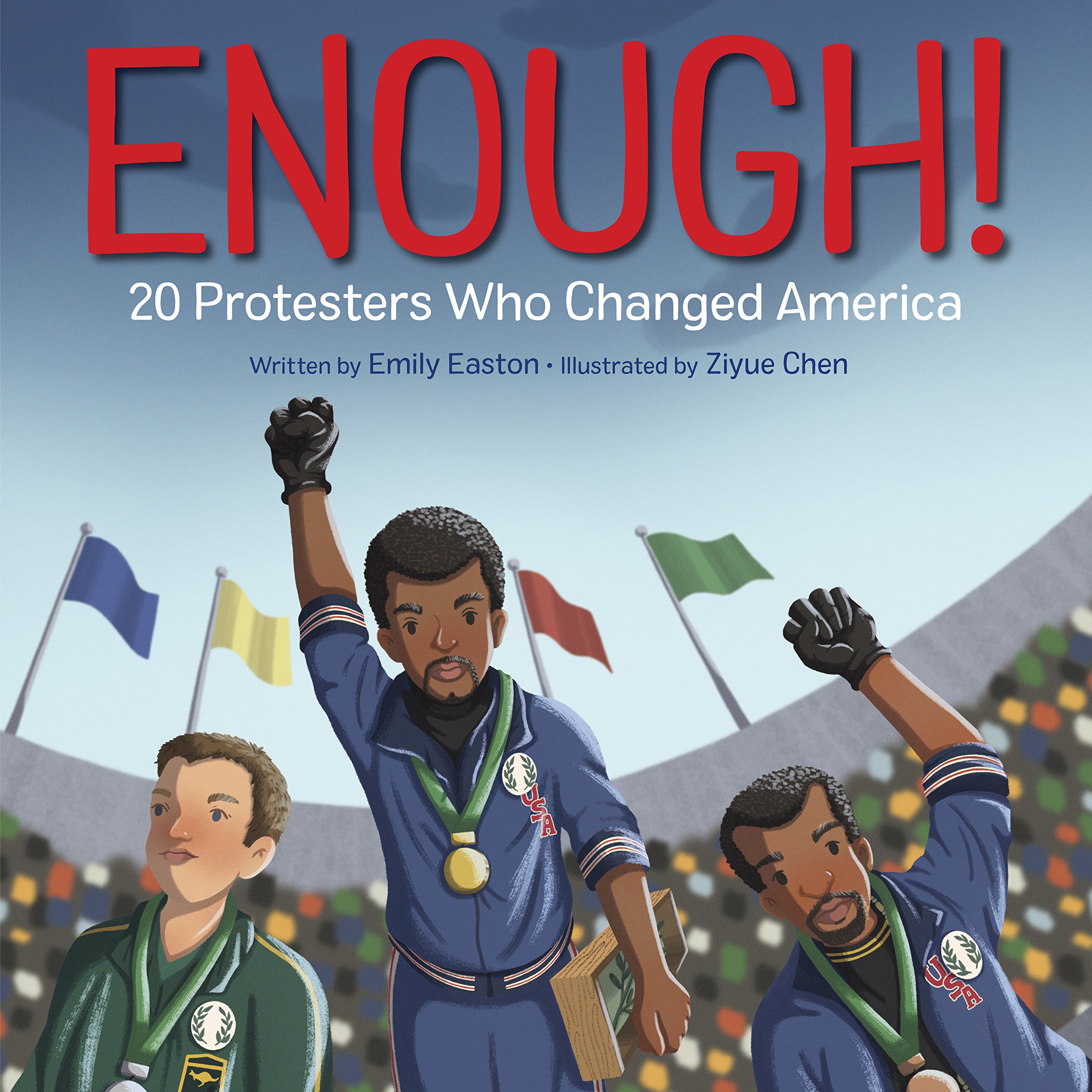 Enough! 20 Protesters Who Changed Americaby Emily Easton and Ziyue Chen
Enough! 20 Protesters Who Changed Americaby Emily Easton and Ziyue Chen
Join Samuel Adams as he masterminds the Boston Tea Party, Ruby Bridges on her march to school, Colin Kaepernick as he takes a knee, and the multitude of other American activists whose peaceful protests have ushered in lasting change. A picture book highlighting America’s rich tradition of protesting, good for ages 6-10.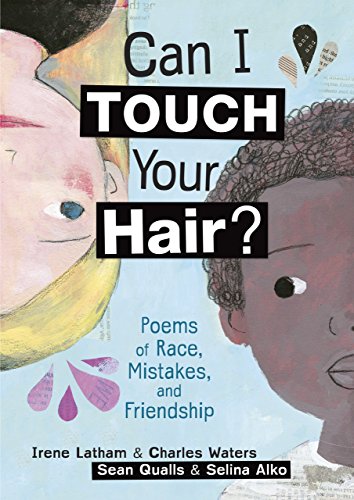 Can I Touch Your Hair? Poems of Race, Mistakes, and Friendship by Irene Latham and Charles Waters
Can I Touch Your Hair? Poems of Race, Mistakes, and Friendship by Irene Latham and Charles Waters
A collection of poems by two narrators, a black boy and a white girl, who are teamed up to be class partners and grow to learn about each others’ families, cultures, and identities. Good for ages 8-12.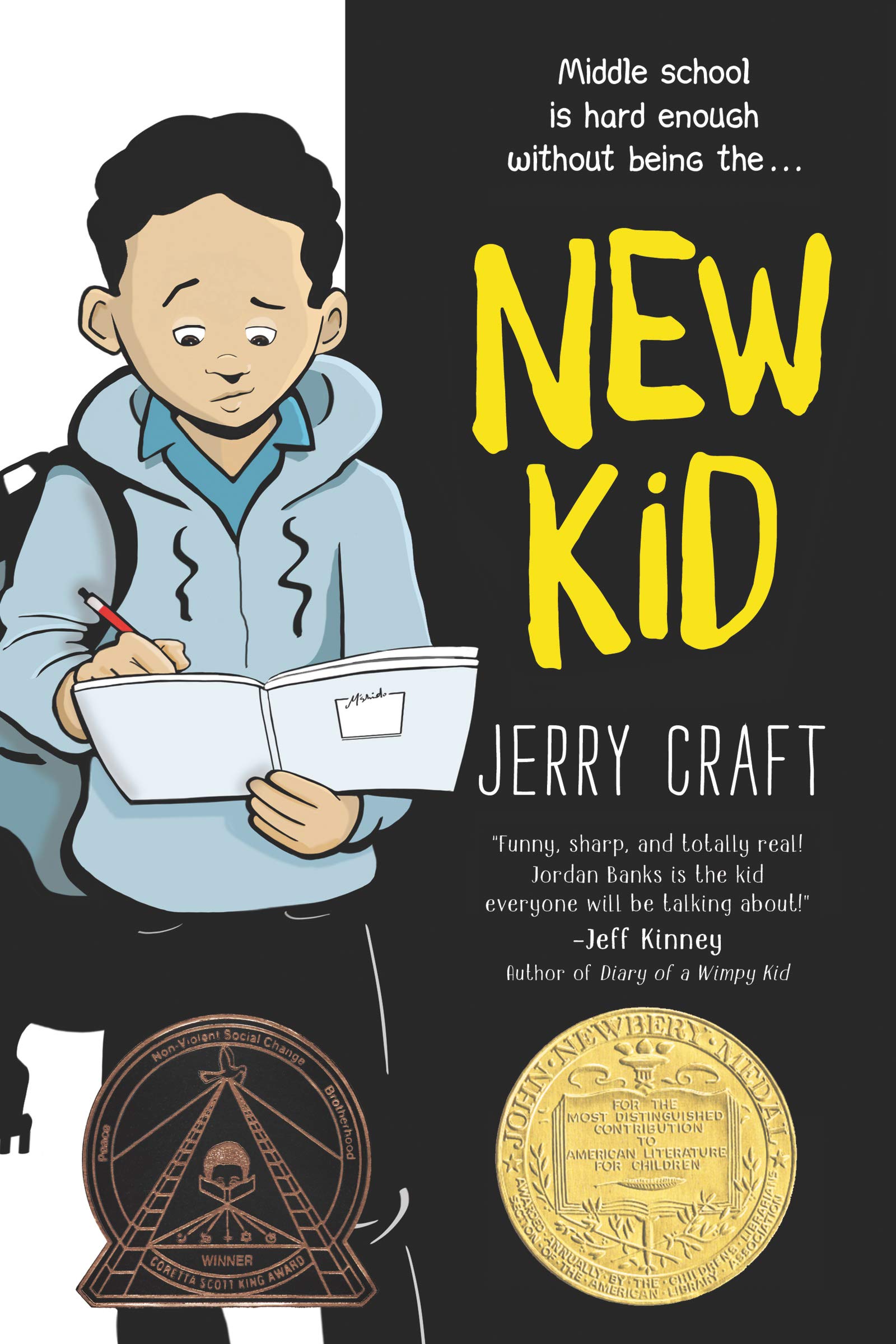 New Kidby Jerry Craft
New Kidby Jerry Craft
Jordan is one of the few kids of color in his entire grade in his new private school known for its academics. As he makes the daily trip from his Washington Heights apartment to the upscale Riverdale Academy Day School, Jordan soon finds himself torn between two worlds—and not really fitting into either one. Can Jordan learn to navigate his new school culture while keeping his neighborhood friends and staying true to himself? Winner of both the Newbery Medal and Coretta Scott King Author Award, this graphic novel is funny and thought-provoking, especially as Jordan deals with endless microaggressions from his mostly white classmates and teachers. Great for ages 9-14. HarperCollins also has a great author talk with Jerry Craft available.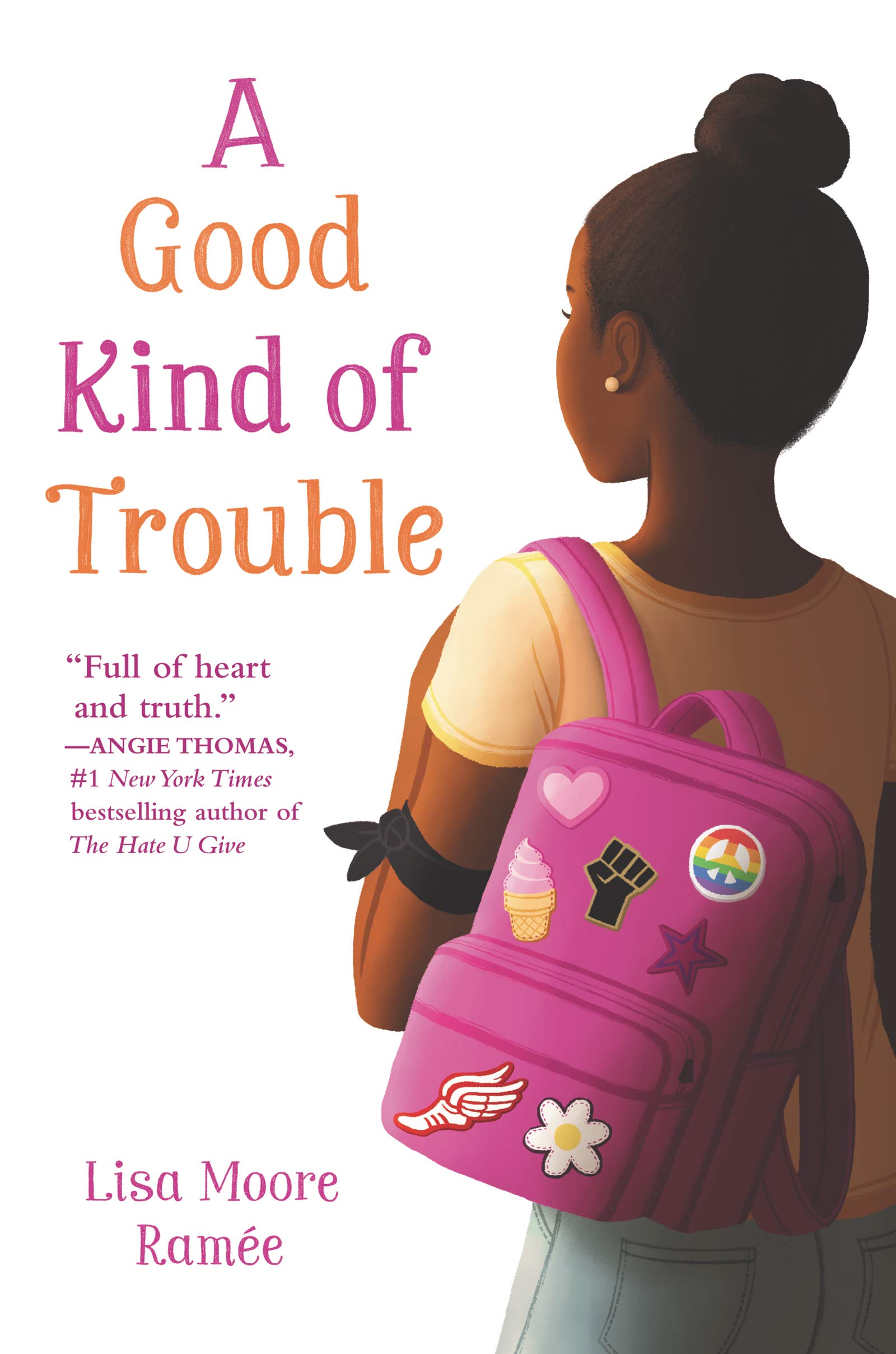 A Good Kind of Troubleby Lisa Moore Ramée
A Good Kind of Troubleby Lisa Moore Ramée
Twelve-year-old Shayla is allergic to trouble. All she wants to do is to follow the rules. But after experiencing a powerful Black Lives Matter protest, Shay decides some rules are worth breaking. She starts wearing an armband to school in support of the Black Lives Matter movement. Soon everyone is taking sides. And she is given an ultimatum. A lighthearted novel about standing up for what’s right, great for ages 9-14.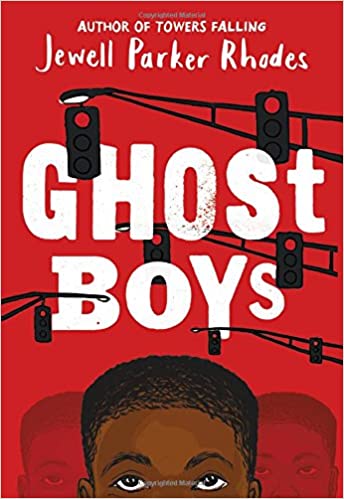 Ghost Boys by Jewell Parker Rhodes
Ghost Boys by Jewell Parker Rhodes
Twelve-year-old Jerome is shot by a police officer who mistakes his toy gun for a real threat. As a ghost, he observes the devastation that's been unleashed on his family and community in the wake of what they see as an unjust and brutal killing. Soon Jerome meets another ghost: Emmett Till, a boy from a very different time but similar circumstances. A powerful and timely novel, best for ages 9-14.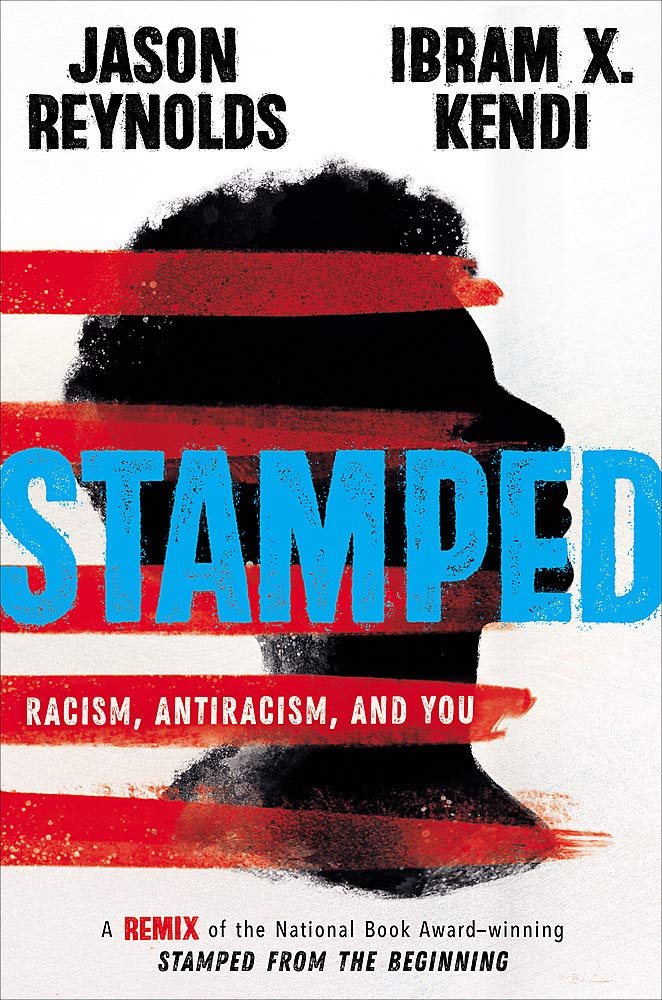 Stamped: Racism, Antiracism, and You by Jason Reynolds and Ibram X. Kendi
Stamped: Racism, Antiracism, and You by Jason Reynolds and Ibram X. Kendi
A timely reimagining for younger readers of Dr. Ibram X. Kendi’s National Book Award-winning Stamped From the Beginning reveals the history of racist ideas in America, and what young people can do moving forward. A powerful nonfiction choice for ages 11 and up.Find many more fiction and nonfiction options for all ages on our e-booklist.
Web Resources for Parents
“10 Tips for Teaching and Talking to Kids about Race.” EmbraceRace.
Simple tips for parents of all backgrounds to help raise tolerant and socially engaged children.“How White Parents Can Use Media to Raise Anti-Racist Kids.” Common Sense Media.
Details practical and easy-to-use advice on fostering empathy and anti-racism in your children.Raising Race Conscious Children.
A web resource to support adults who are trying to talk about race with young children. Tons of great ideas on this website!“‘Raising White Kids’ Author on How White Parents Can Talk About Race.”NPR.
An interview with Jennifer Harvey, author of Raising White Kids: Bringing Up Children in a Racially Unjust America, about how to talk with white kids about racially-charged events.“Talking Race with Young Children.” NPR.
A 20-minute podcast with great advice about talking about race even with very young children. The link offers a great list of other resources, as well.“They’re Not Too Young to Talk About Race.” The Children’s Community School.
This page includes a fantastic infographic on how children are already learning racial biases at a very young age. An extensive list of further resources is also included.“Too Few Parents Talk to their Kids About Race and Identity, Report Finds.” The Hechinger Report.
This article details why it’s important to discuss race with your child and offers suggestions.“The Windows and Mirrors of Your Child’s Bookshelf.” TEDx Talks.
Children’s author Grace Lin describes her own childhood experiences with mostly-white book characters, and illustrates how crucial it is for young readers to see both themselves and others in the pages of books. A must-watch TED talk.
 Youth Services Librarian Allison
Youth Services Librarian Allison -
Let them play! By themselves?
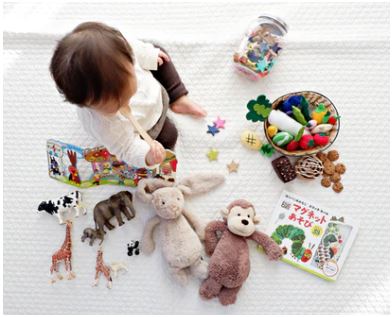
What is solitary play?Solitary play or independent play is play that allows a child to entertain themselves and learn independence without interaction from adults or other children.
But doesn’t that mean I’m just ignoring my child while I engage in other tasks?
No! Solitary play is an important part of childhood development and allows children to develop independence, imagination, creativity, concentration, and problem solving skills.
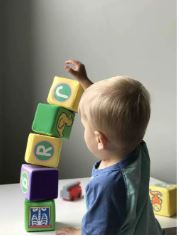
Okay, solitary play is good, but now what?
Create a child safe zone for the play to happen. If you can designate a space that is free of hazards but within eyesight that would be best. Provide one or two open ended options for your child - too many options may actually overwhelm a child and lead to a less meaningful play experience. This can be a set of age appropriate blocks or even some kitchen items like Tupperware that can be stacked or sorted. Consider combining a few items to encourage imaginative scenarios for slightly older toddlers or preschoolers.
Can I get more information about solitary play?
- What is Solitary Play?
- Solitary Play in Early Childhood: Types, Benefits and Why It is Good for Kids
- Playing Alone Can Promote Creativity, Initiative, and Esteem
Mindful Moment
Take a moment to close your eyes and breathe slowly. Acknowledge your feelings both positive and negative. Breathe deeply as you accept that these are valid. Be patient with yourself.
 Youth Services Librarian Demitra
Youth Services Librarian Demitra

